
The Devil's Hand
by Barry William Hale, August 8 2016.
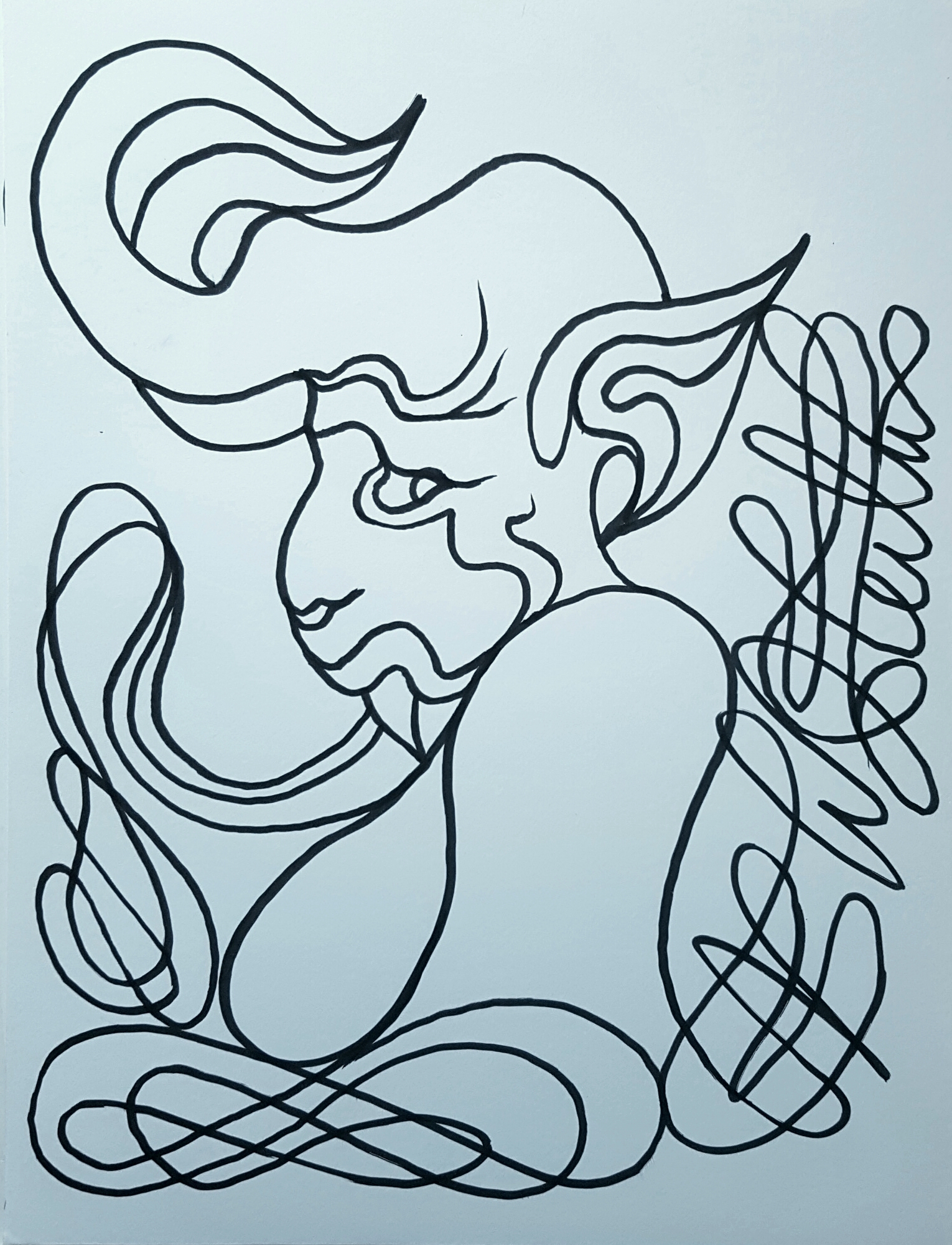 All drawings by Barry William Hale 2016.
Barry William Hale's works are preented by Stephen Romano Gallery, New York .
All drawings by Barry William Hale 2016.
Barry William Hale's works are preented by Stephen Romano Gallery, New York .
Preoccupations of pen, ornaments of boredom, and the doodle are a creative expression born of the unconscious mind. The doodle is an unfocused drawing made while a person’s attention is otherwise occupied they can be concrete representations or abstract, daydream drawings. Etymologically this word is derived from wasting time or being lazy. An escapist occupation. Hence I have adopted the term the idle hand as a pun on the saying that the idle mind is the playground of the devil.
Kenneth Clark & A.E. Popham says that doodles were like the random flotsam of the unconscious mind that rises and float on the surface. Treated as if it was a natural and spontaneous phenomenon, was in many respects an invention, a concept at a certain point became extremely popular. With the rise in the popularity of Graphology in the early part of the 20th C which combined with virgining psychoanalytic ideas about free association and unconscious thought.

The term Graphology is drawn from the conjunction of the ‘Graph’ the Greek word for writing, and ‘logos’ speech. Therefore, could be interpreted as the speech drawn from writing and in the case of graphology it’s meaning is derived from the vocabulary of the pen.
Graphology is a pseudoscientific study and analysis of handwriting, especially in relation to psychology. It is reputed to have diagnostic abilities to determine the character of a person and applied to the field of medic for example tracking disease especially of the brain and nervous system. Graphologists evaluate the pattern form, movement, rhythm, and consistency of the graphic strike in terms of psychological interpretations. Positing the ‘ideomotor effect’ Graphologist believed that writing was mostly out of the control of the subject and that the movements involved in writing are organized by the central nervous system.
Like handwriting the doodle was seen to have peculiarities unique to the hand from which they came, was cast into a particular context of psychological interpretation. Doodles combined with the influence of Graphology and a generalized version of Freudian psychoanalysis provided and interpretative framework. Creating the capacity for the doodle to reveal something of the individual that otherwise might be hidden.
At the same time in which an interest in doodles was increasing in popularity, this was reflected in the field of modern art; with the likes of Kandinski, Klee and Miro, and among the Avant-guard especially within the artistic movements of Da Da and Surrealism. The centrality of Automatism within the Surrealist movement is well documented, Breton’s application of the techniques of Automatism within an Artistic context and the replacement of spiritual agency with Freudian model of the unconscious and furthermore viewed their artistic method as a true expression of the unconscious and outside of conscious control…..
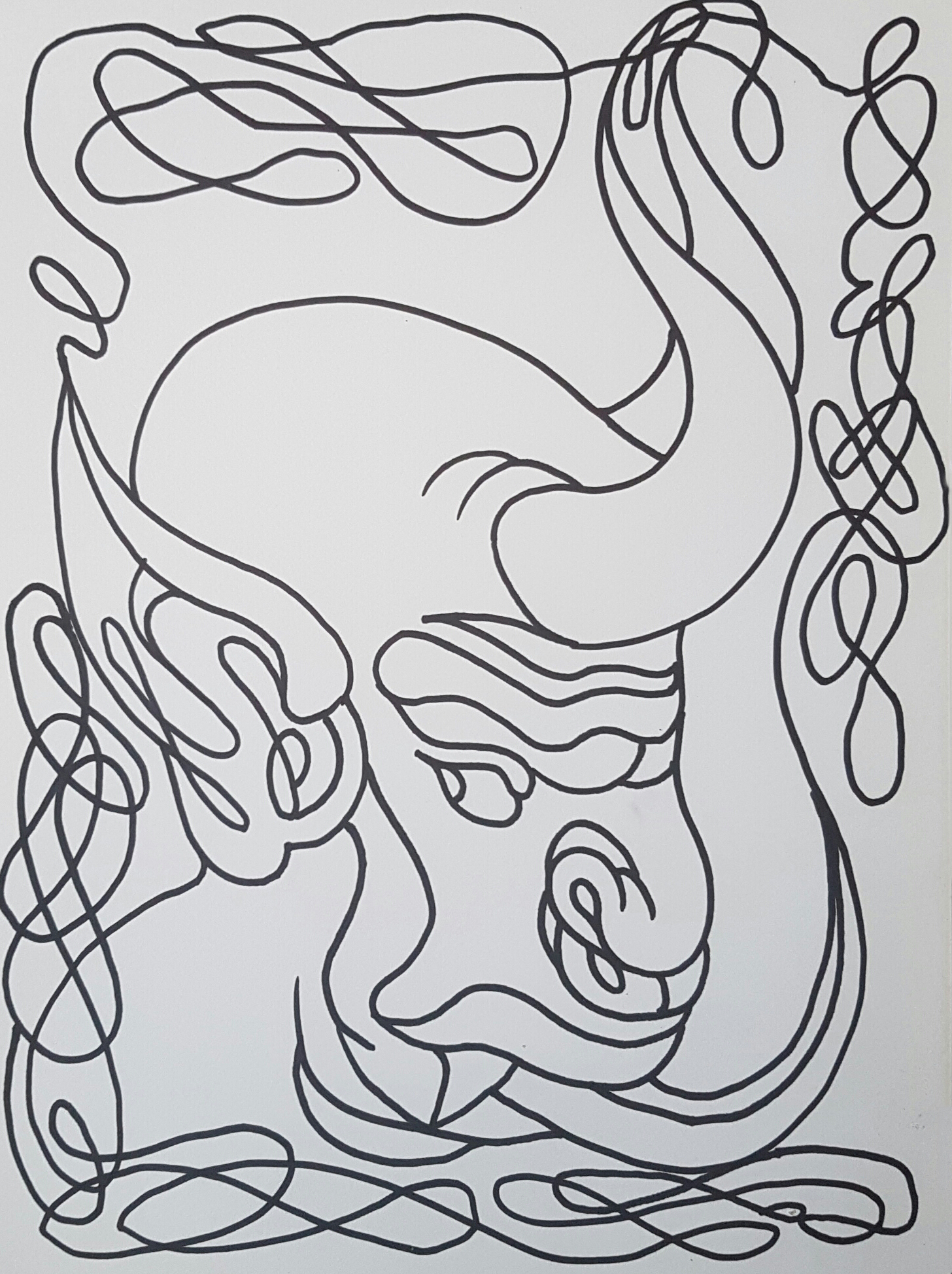
Italo Calvino asked that they be considered imaginative musings as points of knowledge and the subconscious instrument of knowledge. The doodle was conceived as a creative expression of the unconscious mind and enabling it to be rendered itself in a symbolic expression. A form of communicating with images rather than words. The doodle may therefore be conceived as the beginning of something both tangible and ambiguous. Although doodling began as a reaction against the rules of writing, it also colludes with it. An idle preoccupation that occupies the margins and spaces of the written page becomes an ornament of boredom. An expression of hidden dispositions of a private and secret nature. The doodle allows the hand to work rather than the mind, bypassing the conscious becoming the self-indulgent hand of the escapist. Paradoxically the daydream drawing has been shown to aid concentration on something other than itself.
The doodle like automatism in all of its varieties are almost all accompanied with altered or disassociated states. Mason reports a mediumistic state and a compulsion in the execution of his automatic drawing; the same can be said of the doodles, being dictated or the result of some obscure compulsion. The doodle seems to unfold autonomously independent of their creators will.
Prinzhon says of the doodle is at its rudimentary form of the ‘configurative urge’ .
The modern phenomenon of the doodle has much earlier antecedents with the drolleries found inhabiting the margins of the illuminated medieval manuscripts . These decorative thumbnail images primarily consisting of a menagerie of fantastical creatures, hybrid mixtures of different animals, animal and human beings, animals, plants and/or inorganic things. Often these ornaments of the page bore a thematic connection with the subject of the text of the page. Although some are effectively doodles added later. Drolleries are often called grotesques. The word ‘grotesque’ comes from the Latin root ‘grotto’ meaning a small cave. A strong influence upon these fantastical drolleries was the discovery of the caves of Domus Aurea in 15thC. These cave were richly adorned with strange creatures, unusual compositions and an unfamiliar form of Roman decorative arts. An unfinished palace complex full of frescos and wall decoration, and floor mosaic fascinated the public of the time. Vitruvius in 300 BCE dismissed the artistic content of these caves as meaningless and illogical. The discovery of these chambers inspired a proliferation of ornamentation with a strong emphasis on the Grotesque. Typified by chimeric monstrosities, decorative patterns using curving foliage and other elements.
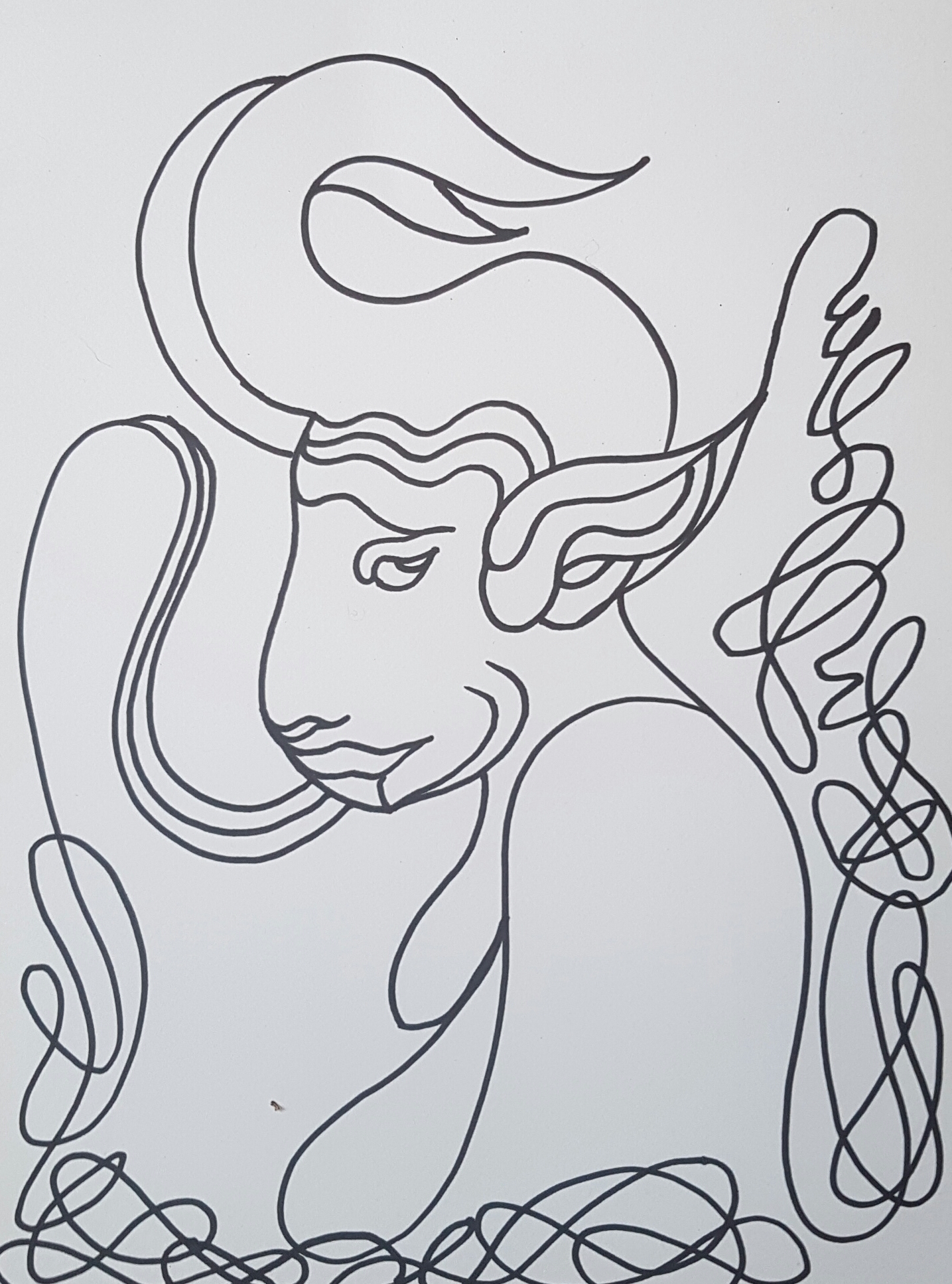
In the eighteenth century grotesque became a general term to denote the fantastic, ugly, strange and incongruous. Amidst the large variety of motifs and figures found in the palate of the grotesque they seem to be hybrid creatures in a state of flux and metamorphous as their chimeric admixtures spring out of unnatural unions and dissolving into different orders of being. Dissolving into their backgrounds to blend into their surrounding designs collapsing into their own scaffolding and merging into the frames. Grotesques comprise and ornamental alphabets or arrangements, arabesques interlaced with garlands and fantastical creature peering through the foliage of unknown gardens in a teratological masquerade.
“The grotesque embodies in itself a contradiction [which operating by laws peculiar to itself] a total conception of an art that recognizes it own paradoxical character, pure and impure, autonomous and dependent, image and mirror. “

The page of the illuminated manuscripts was divided into the margin inhabited by drolleries and the centre which contained the text. Ernst Gombrich sees this division of the page as reflecting the division of the unconscious and the conscious. The marginal doodle revealed the unconscious notions and preoccupations of the author or scribe. The margin provided a space for the freedom of the imagination to express itself. A subterranean dwelling place for the inhabitants of the recesses of the unconscious to emerge and populate the peripheries in a fantastical forest which is full of strange abominations.
Leonardo da Vinci’s ‘Treatise on Beauty’ is populated with marginal grotesques. Gomwich argues in that Leonardo was drawn to the grotesque because they were not representations at all, but true creations with no original type in nature.
In ‘the Pleasure of Boredom: Four Centuries of Doodles’, Gomwich uses the doodle of 1727 ledger of the Neapolitan bank as ‘an expression of play and instinct which never leaves us even when we grow up’. He goes on the illustrate that there were two types of games that these bankers scribe indulged in their idle time on their ledgers. One form of doodle was derived from writing the other from image making. For Gomwich the image made by a doodler can never be equated to failure because they were never meant to be anything at all. Even if the doodler has knowledge of image-making found in the history of western art. They are the result of an instinctual process and is not required to confirm to the conventions of principles. Gomwich see the marginal scribble as the most authentic and direct record that is found in an individual’s impulsive mark making. In this light Gomwich sees Surrealism’s utilization of Automatism as a basis for their art production as the climax in the development of the doodle.
Initially I called my automatic drawings ‘Peripheral Spectra’ on account of noticing that after many years that figurative forms began to emerge all sporting a side profile. As if emerging from a peripheral vision out from behind the conscious field of vision. That could only be seen darting out of the corner of the eye. These figurative forms emerged on my early travels along the Yucatan peninsula of Mexico also known as the Mayan Trail. One of my Mexican travelling partners commented that what I was drawing was Maya’. I began to notice in looking for the aforesaid resonances with Mayan hieroglyph, was that the writing reliefs that adorn the ancient ruins consisted of many faces with were primarily facing side on. Also another similarity in between my drawing and the hieroglyph was that there were repetitive and similar although aesthetically not apparently evident in any formalistic sense. My automatic drawings welled up from the periphery, bubbling forth from the depths of the unconscious in an endless array of a proliferating multitude. These figures entangled in foliage’s of filigree and ornamental free hand is an autonomous art form that partakes of automatism.
My Automatic drawings and demonic drolleries are presented without polarity of any central text. It is not a matter they cannot inhabit the margins it is rather an inversion where the grotesques from the margins have bleed into the centre in asymmetrical compositions when the surface is a page. The text has dissipated and retreats becoming an abstract and ornamental ground. Figures emerge out of collapsing frames. Filigrees that adorn scripts become important as metaphoric clouds form landscapes and spread with no depth. Form handwriting come ornamental filigree from them the forms of the autodaimons begetting and consuming themselves in an endless parade. As ectoplasm issues forth from the bodies of the mediums the autodaimons issued forth lines and congealing sameness as larval morphologies.
My automatic drawings often incorporate the signature and other word elements but the ornament that adorns the text has eclipse the word and the figures of the grotesque had taken up habitation occupying the centre to the sides. For Gombrich the marginal doodle becomes the centre for a new concept of art. My automatic drawings are more akin to the doodles that Gombrich speaks about, rather than the rarefied artistic expressions of the Surrealist. Although at times there can exist strong formal resonances with the automatic drawings of Mason. The emergent figurative element with my automatic drawing I call autodaimons they are “image without resemblance”, for they have no progenitor rather they propagate via the agency of contagion.
These drawings are a product of the process of their making. The process is highly repetitive and is executed rapidly, aesthetically the forms and gesture are also highly repetitive and endless array of autodiamons consuming and begetting themselves extending of a surface like a rhizome which spreads out at infinitum. There is also a strong resonance in the elements of their compositions to a form of writing; it is a form of writing that defies understanding it is an asemic form of writing with no semantic content, with its own inscrutable alphabet.
In many respects like the doodle my automatic drawings are a simple occupation of time and my relation to them at the time of their executed correlates with what Wittgenstein would call the ‘disinterested gaze’ there are no preconceptions just the act of drawing itself
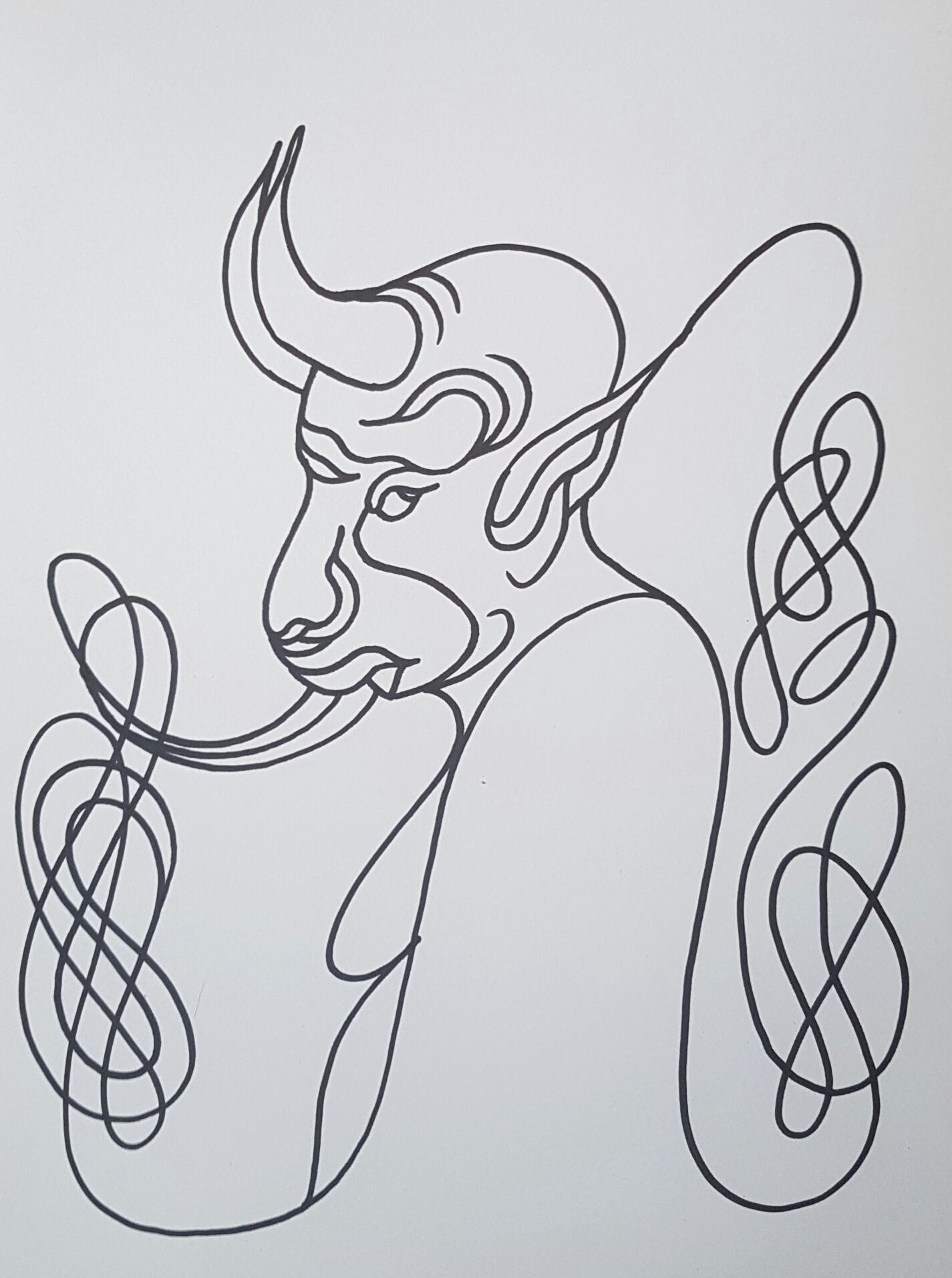
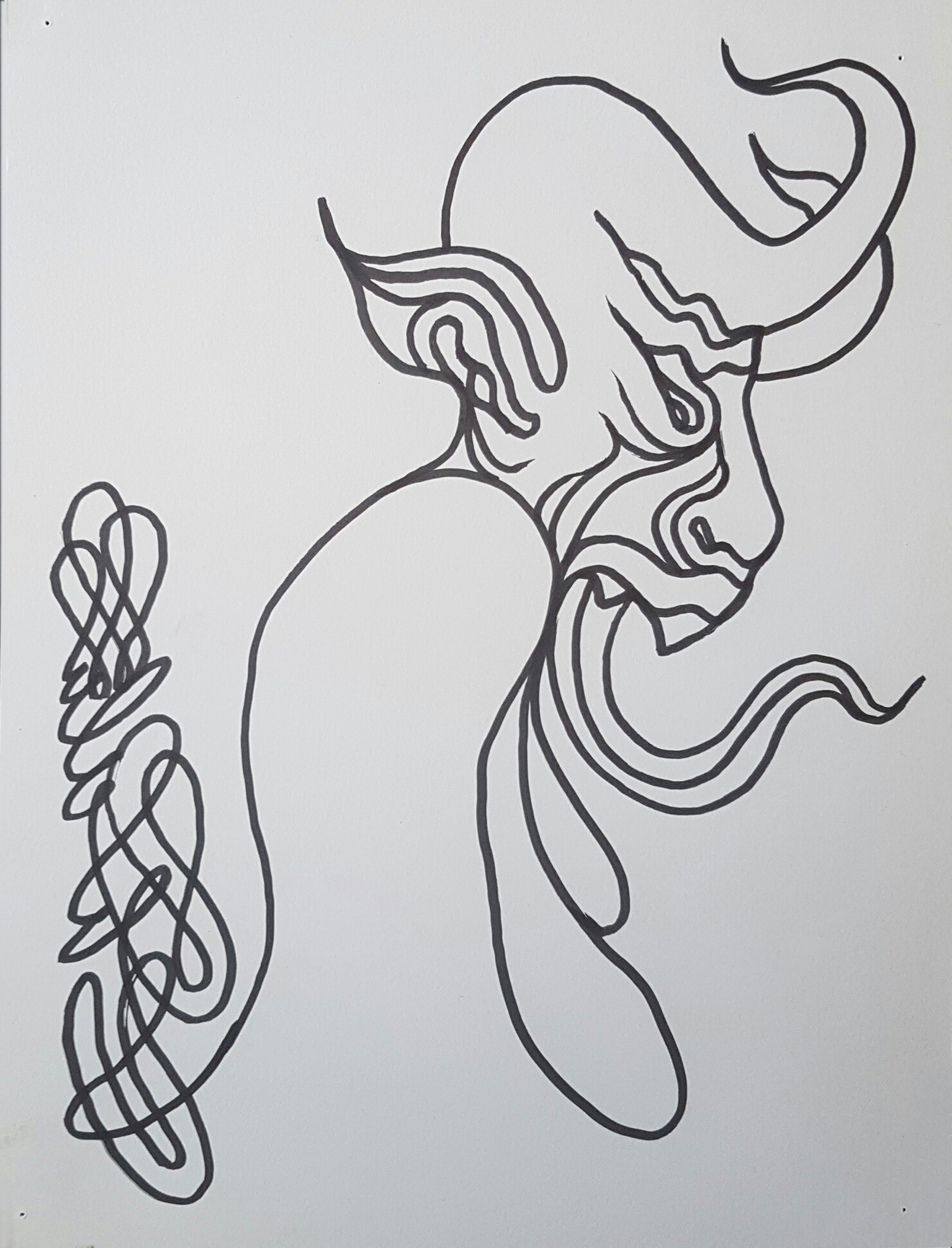
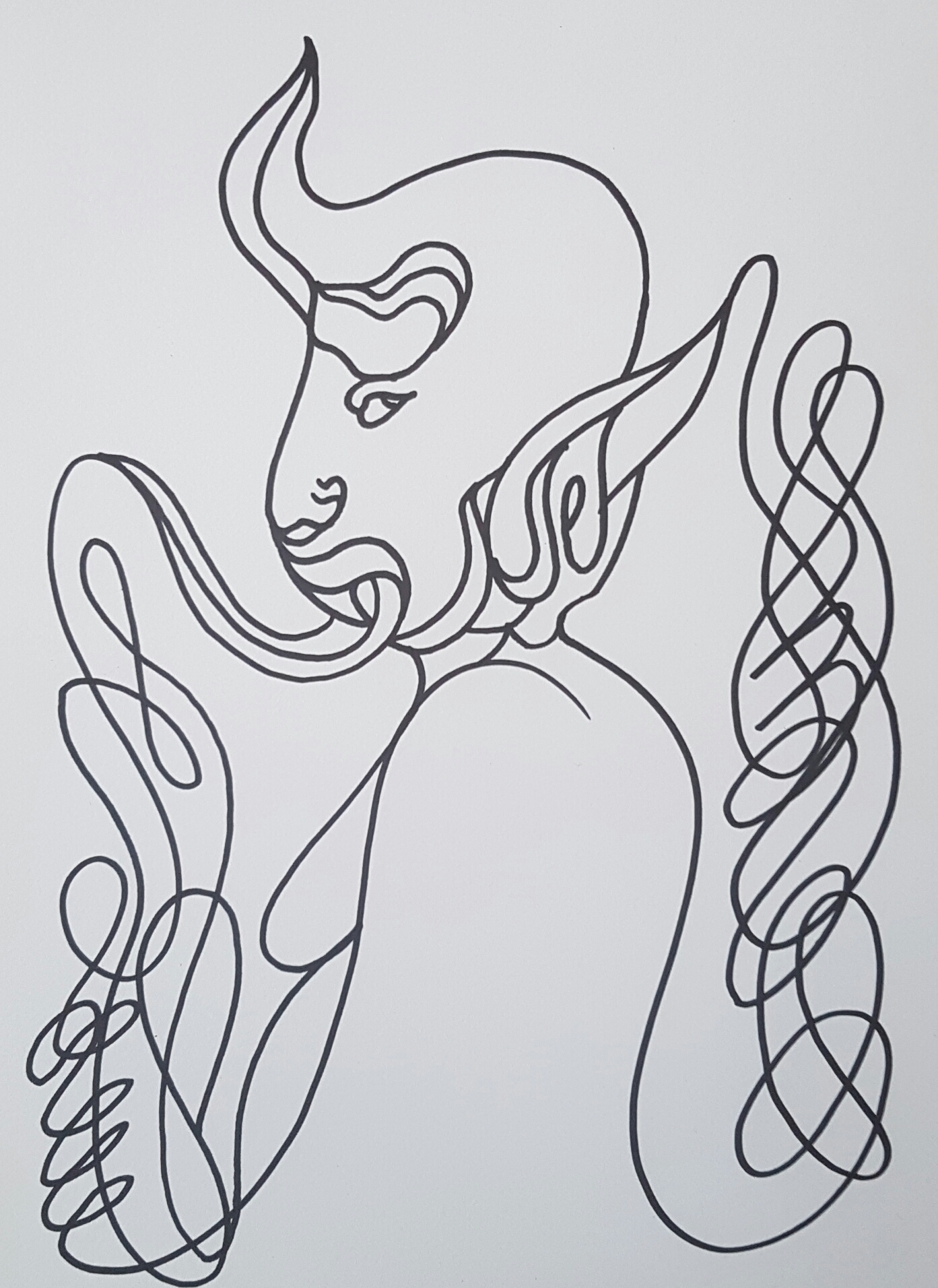
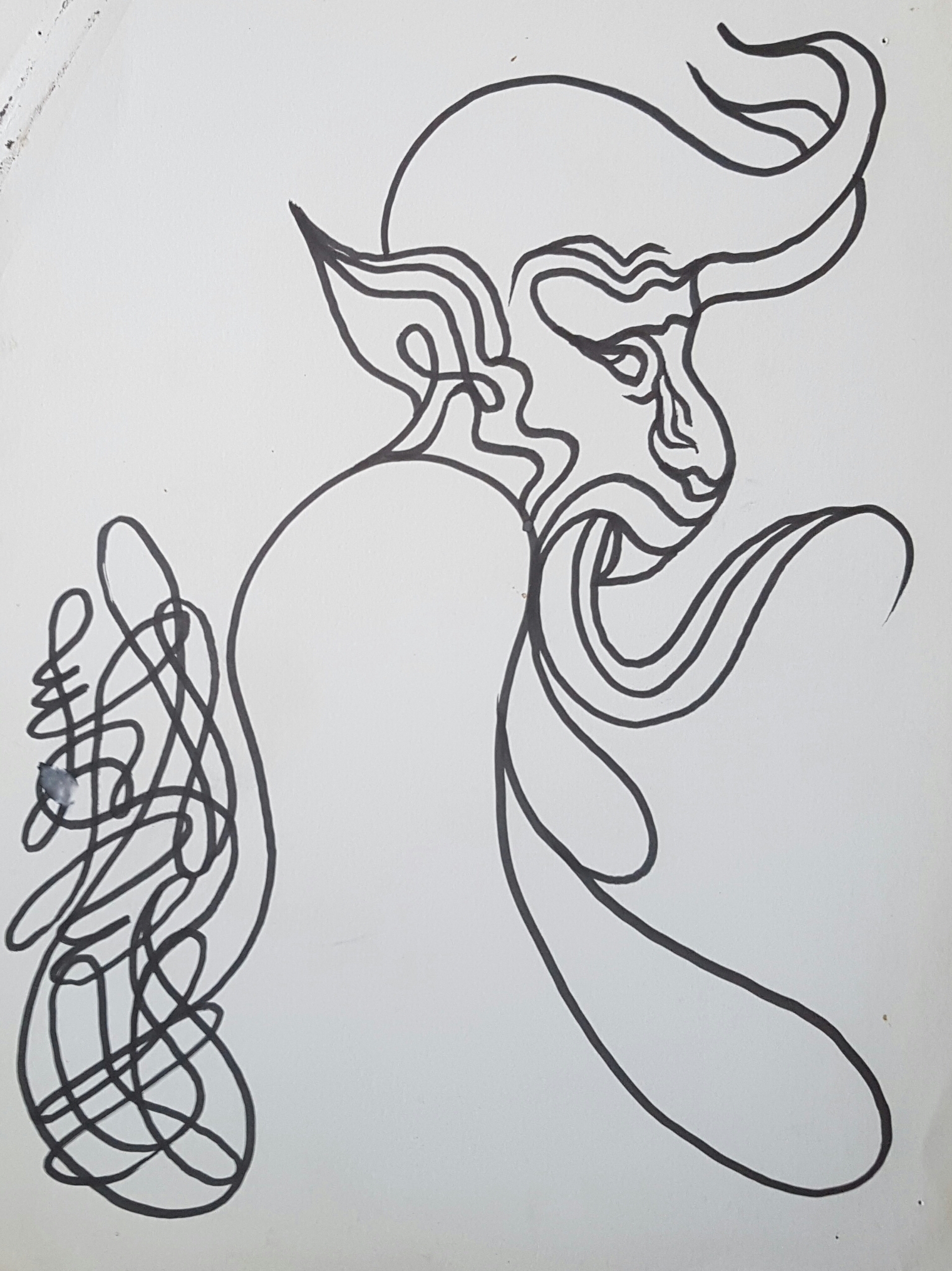
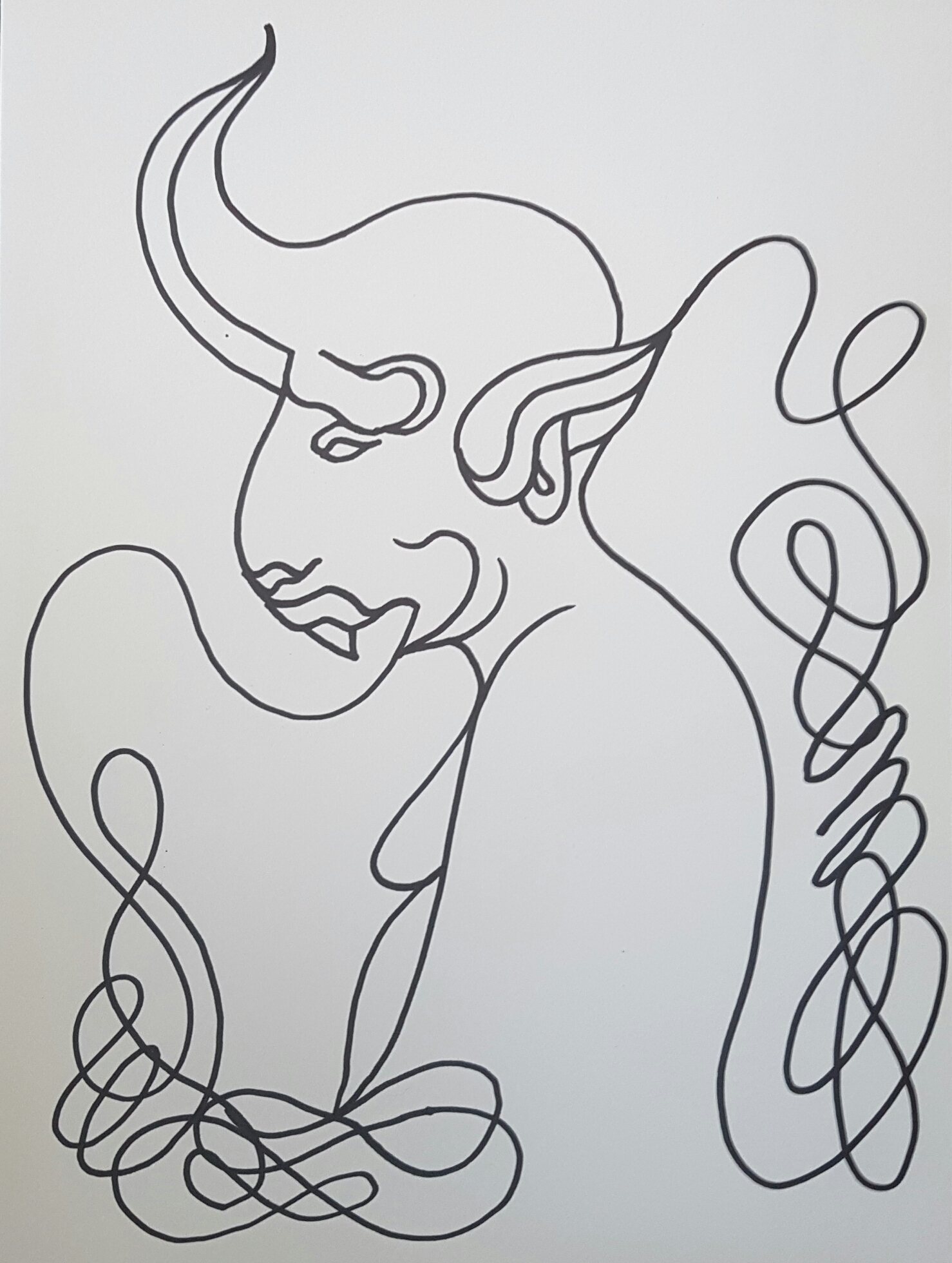
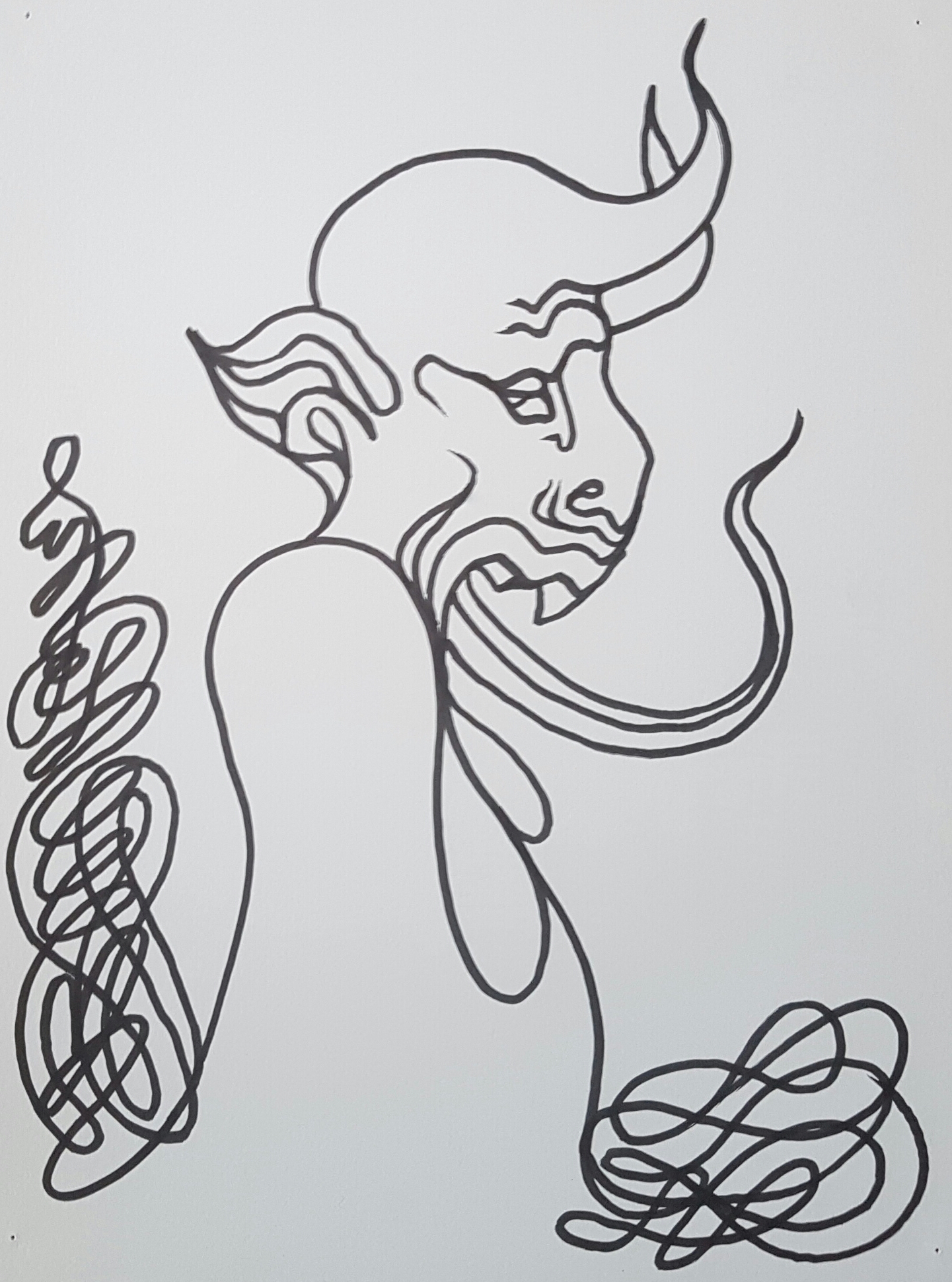
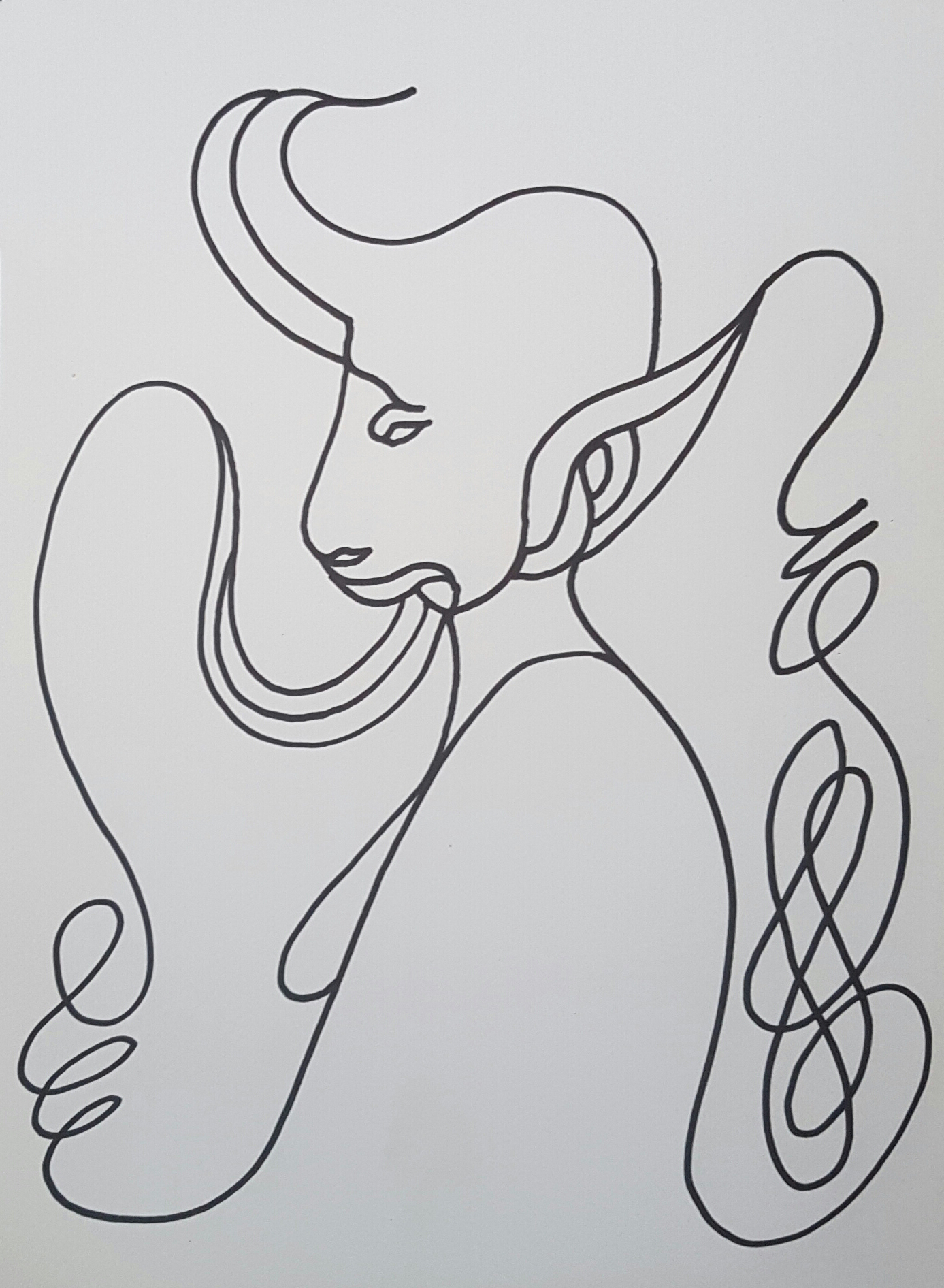
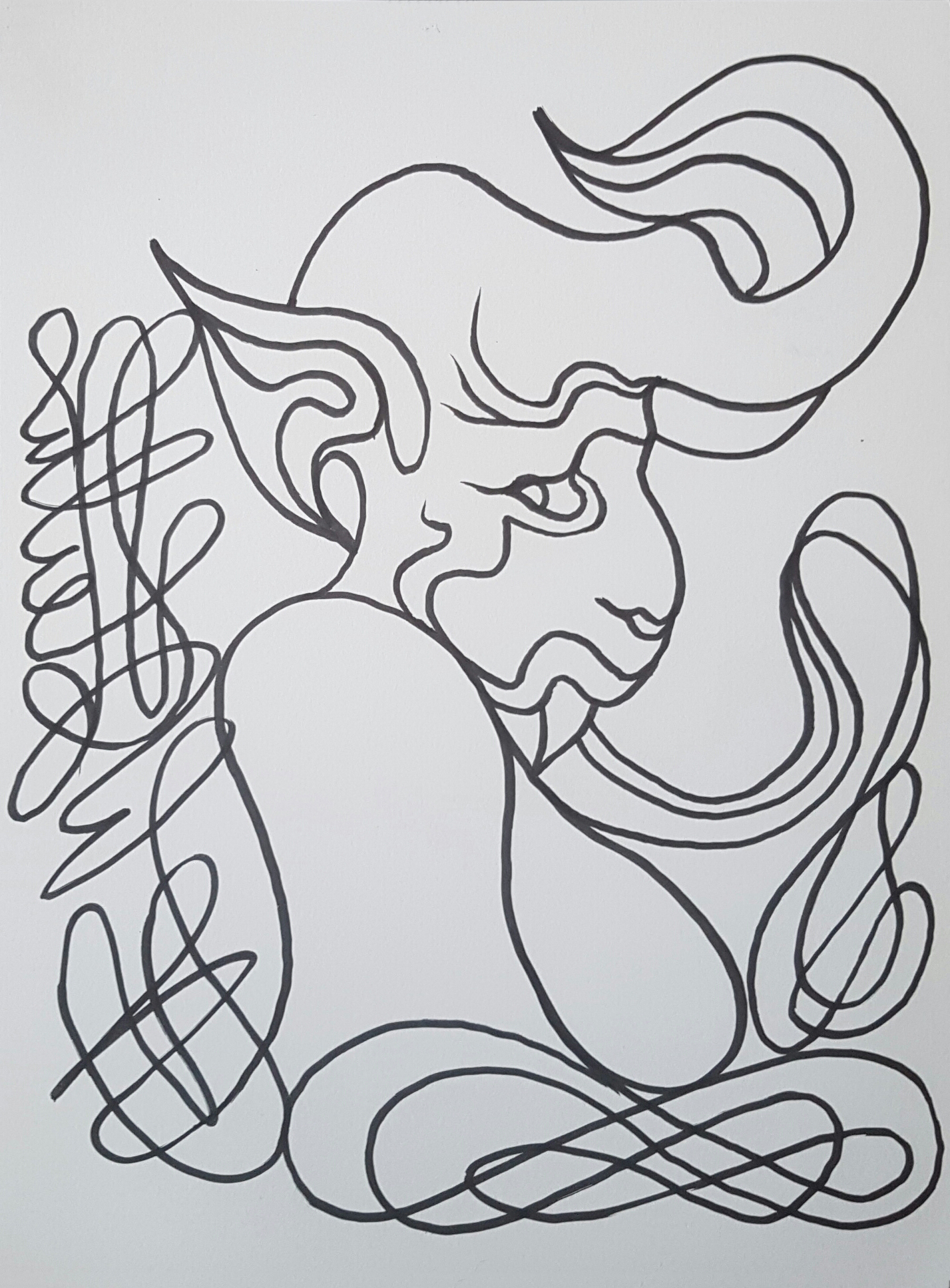
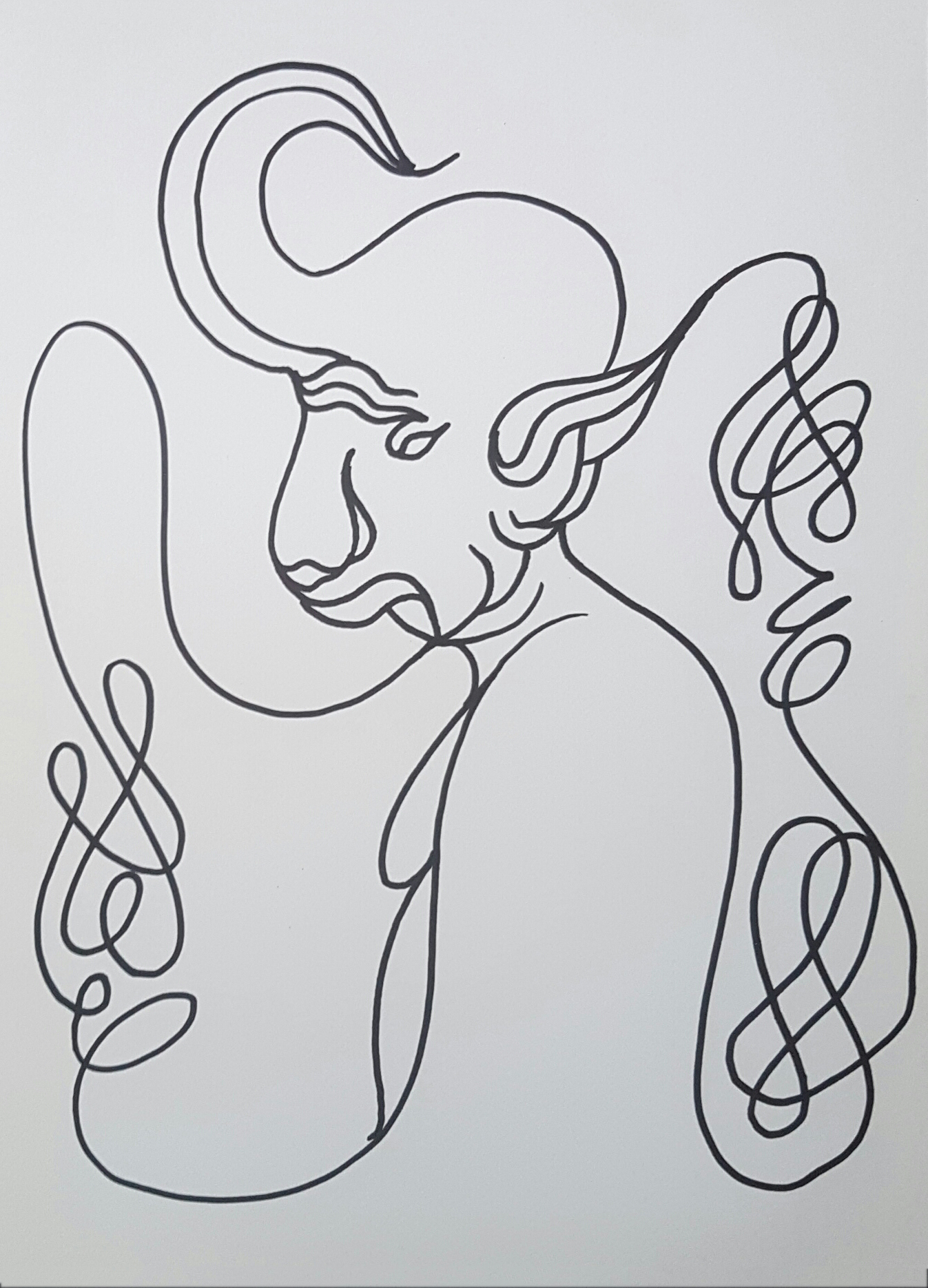
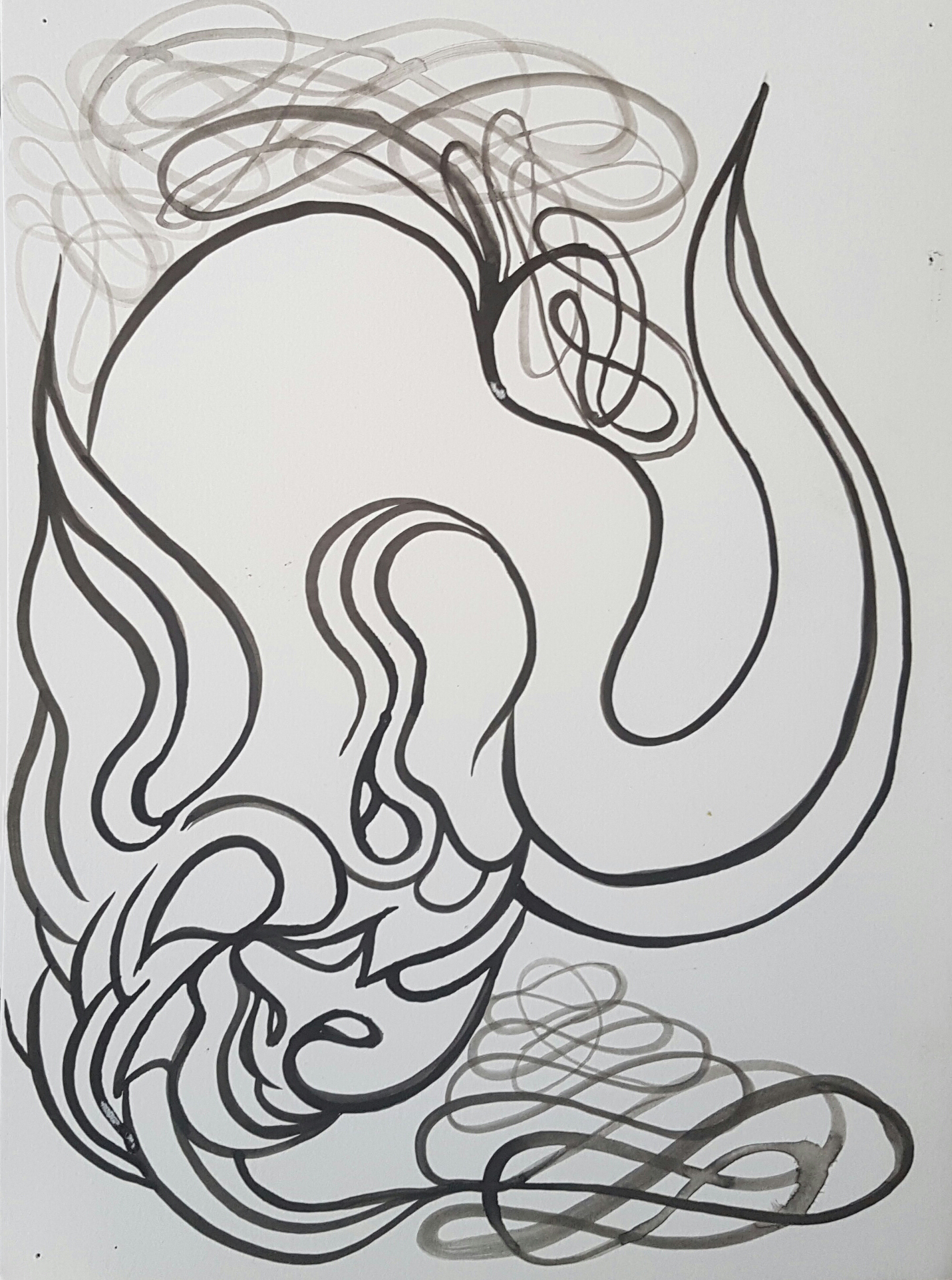
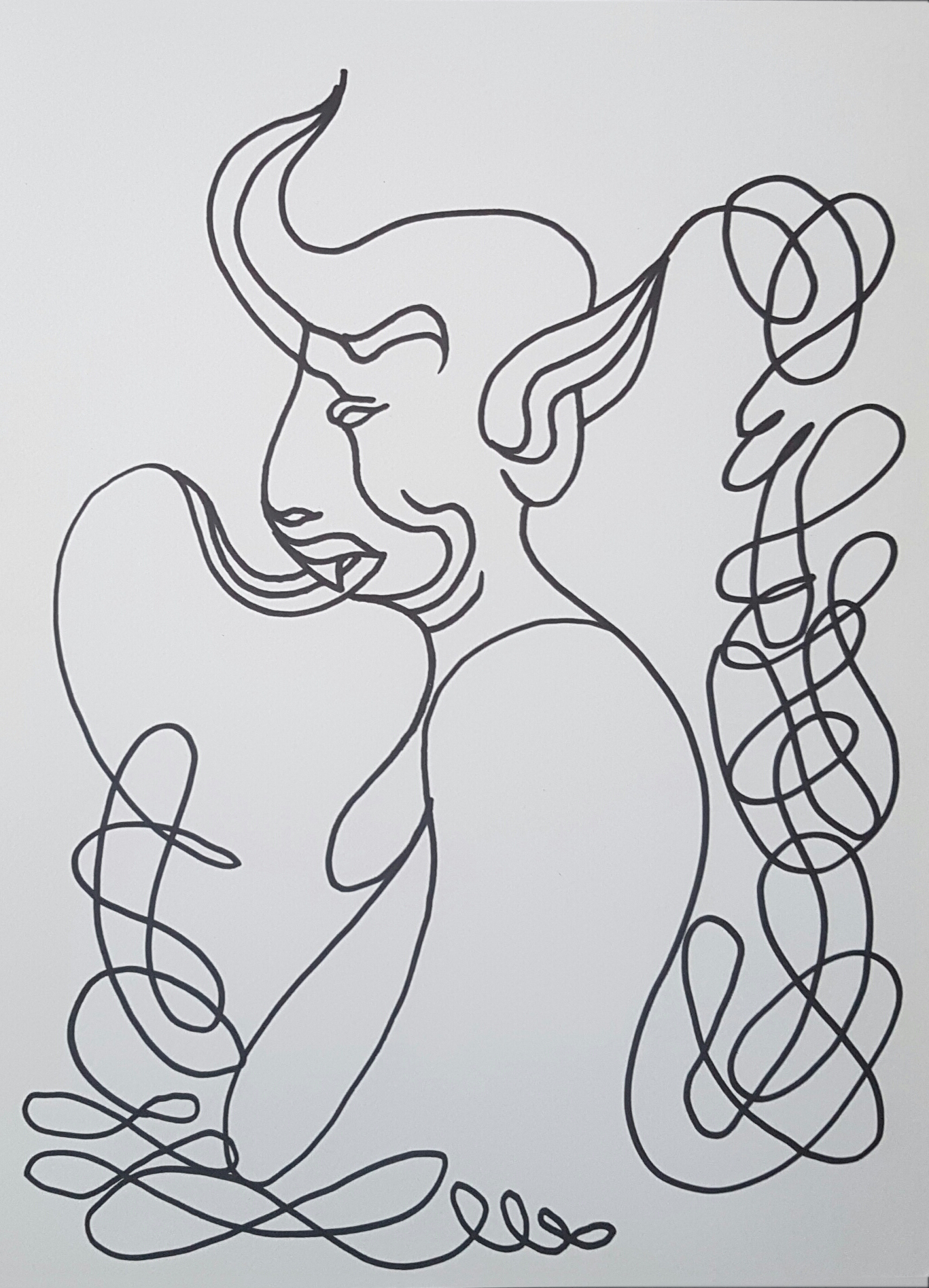
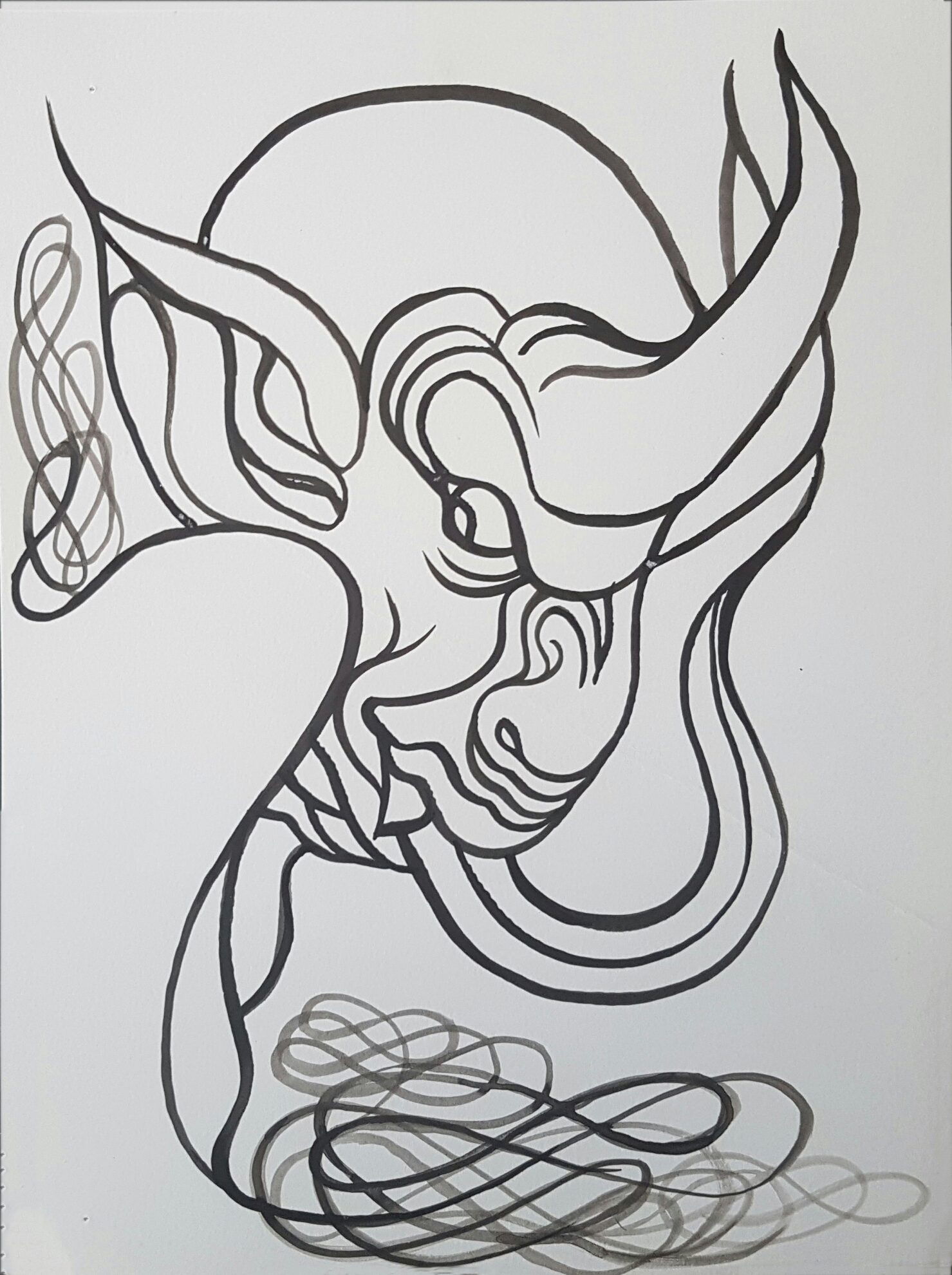
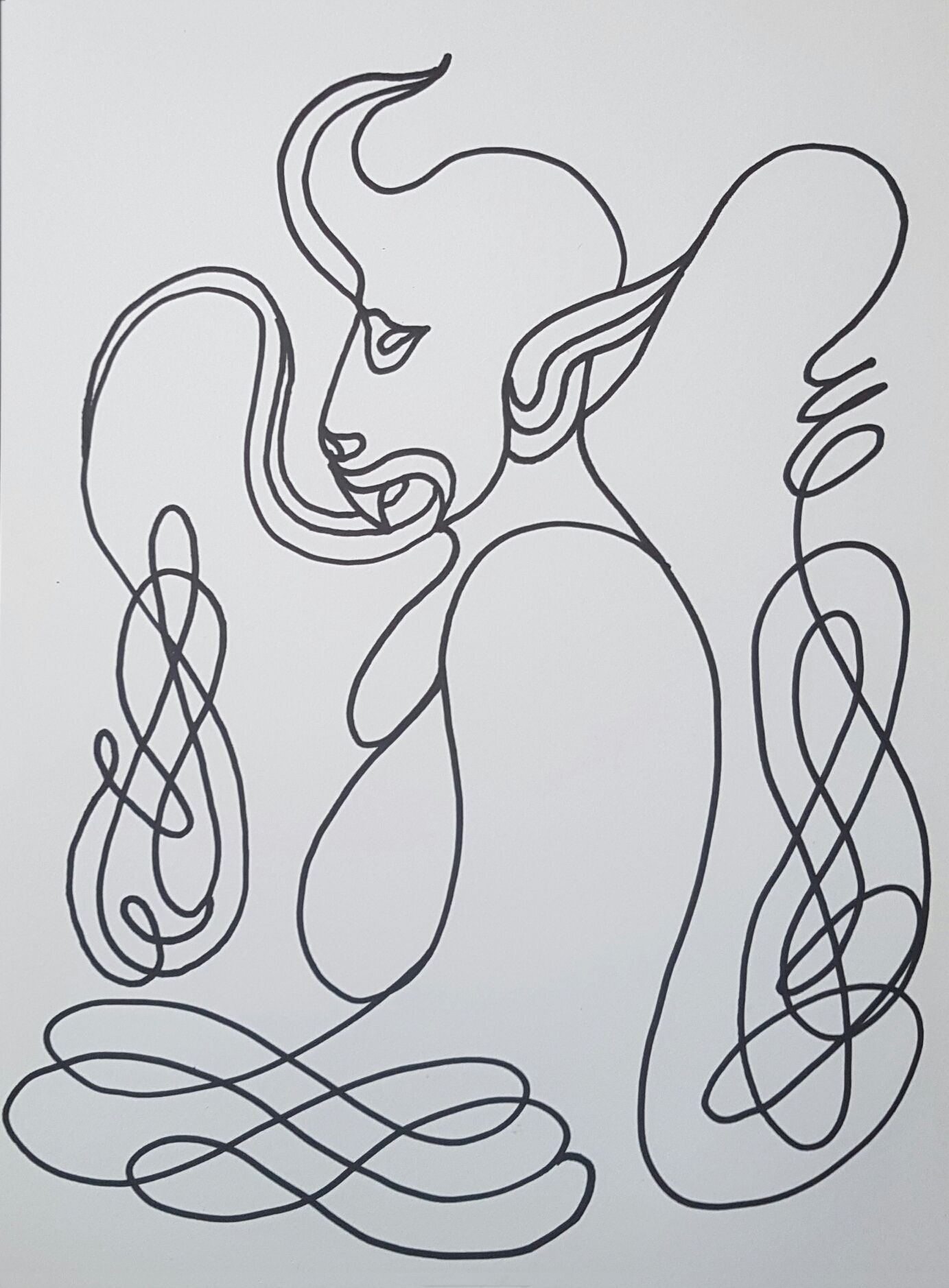
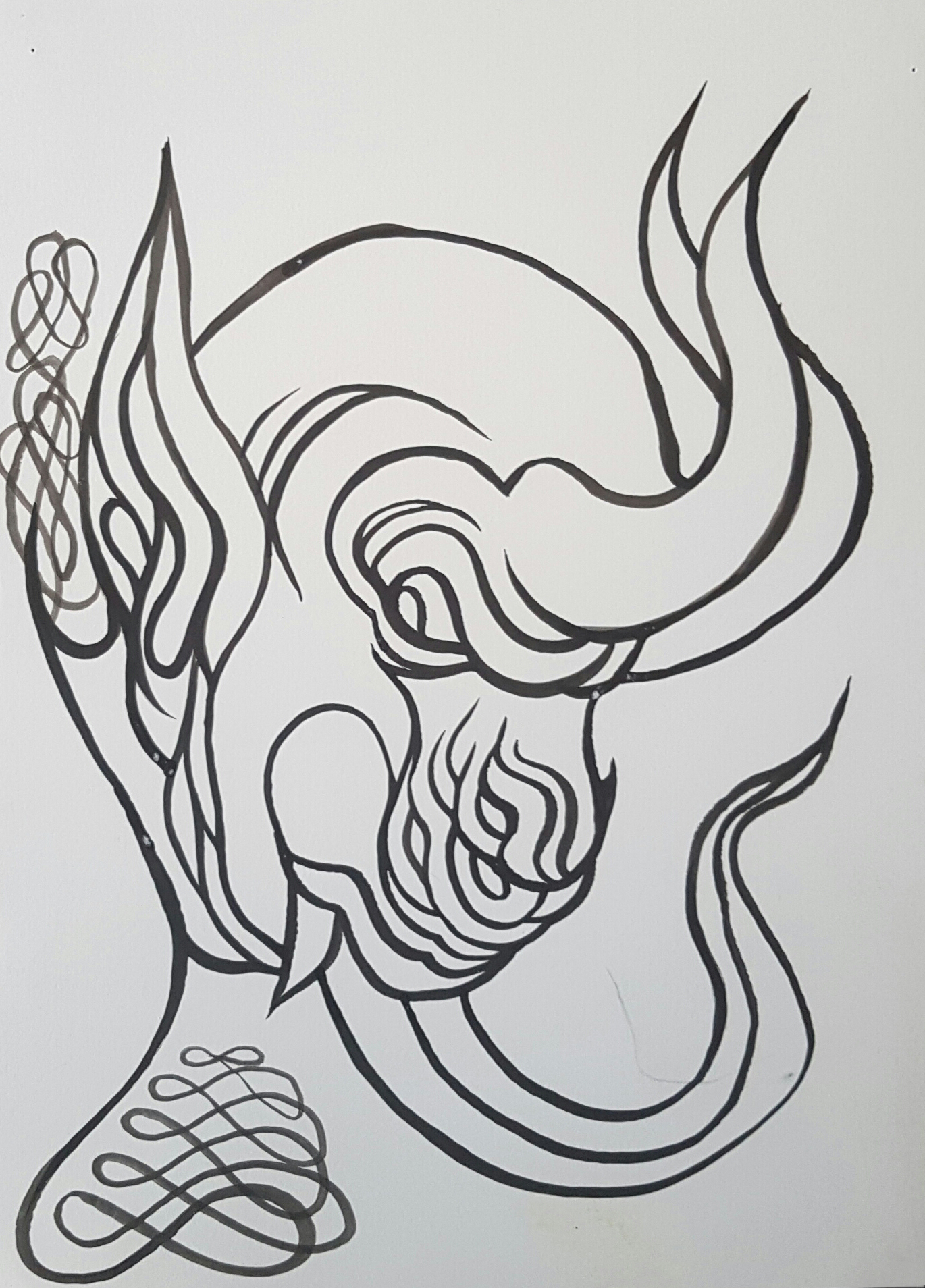
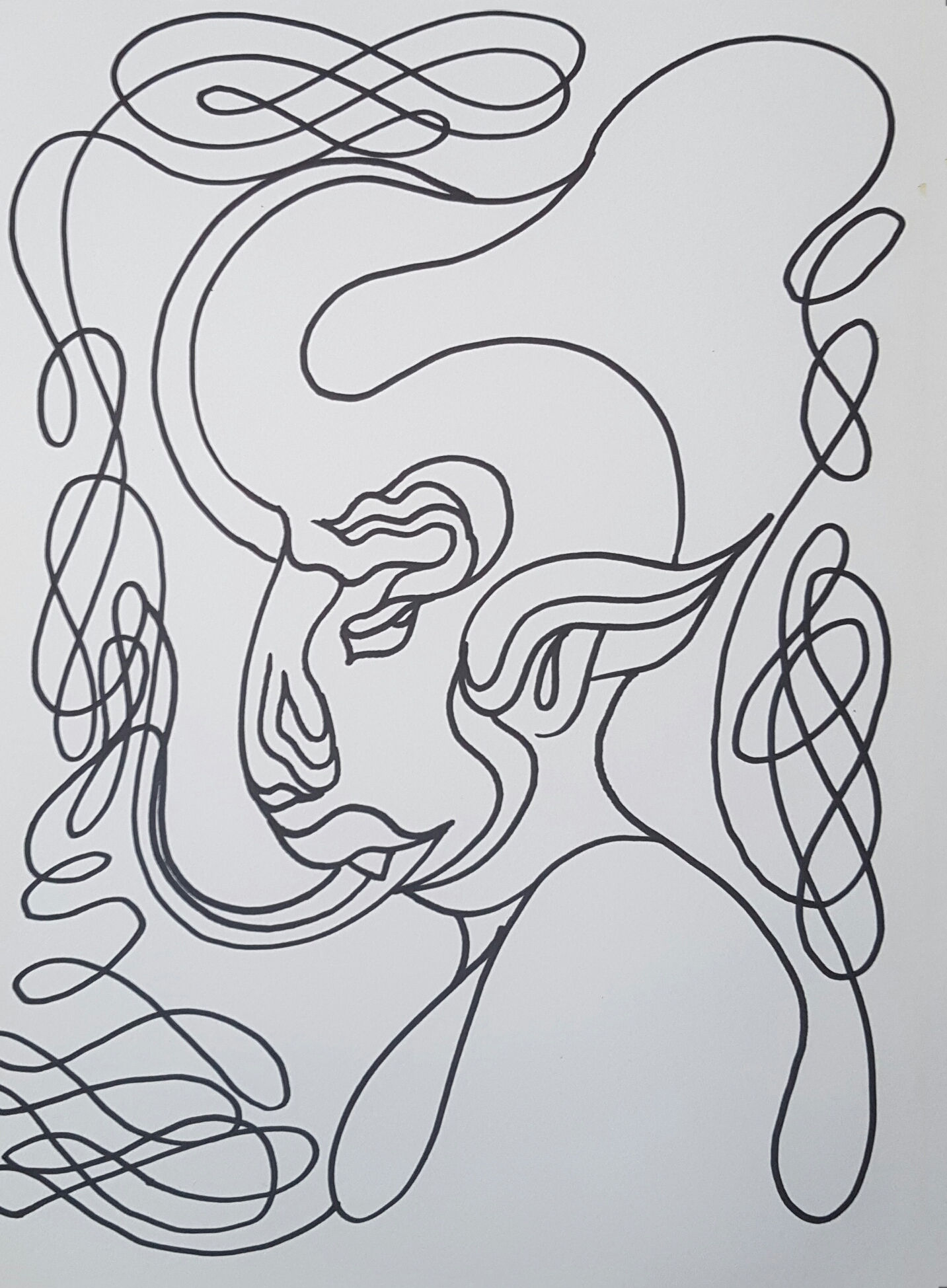
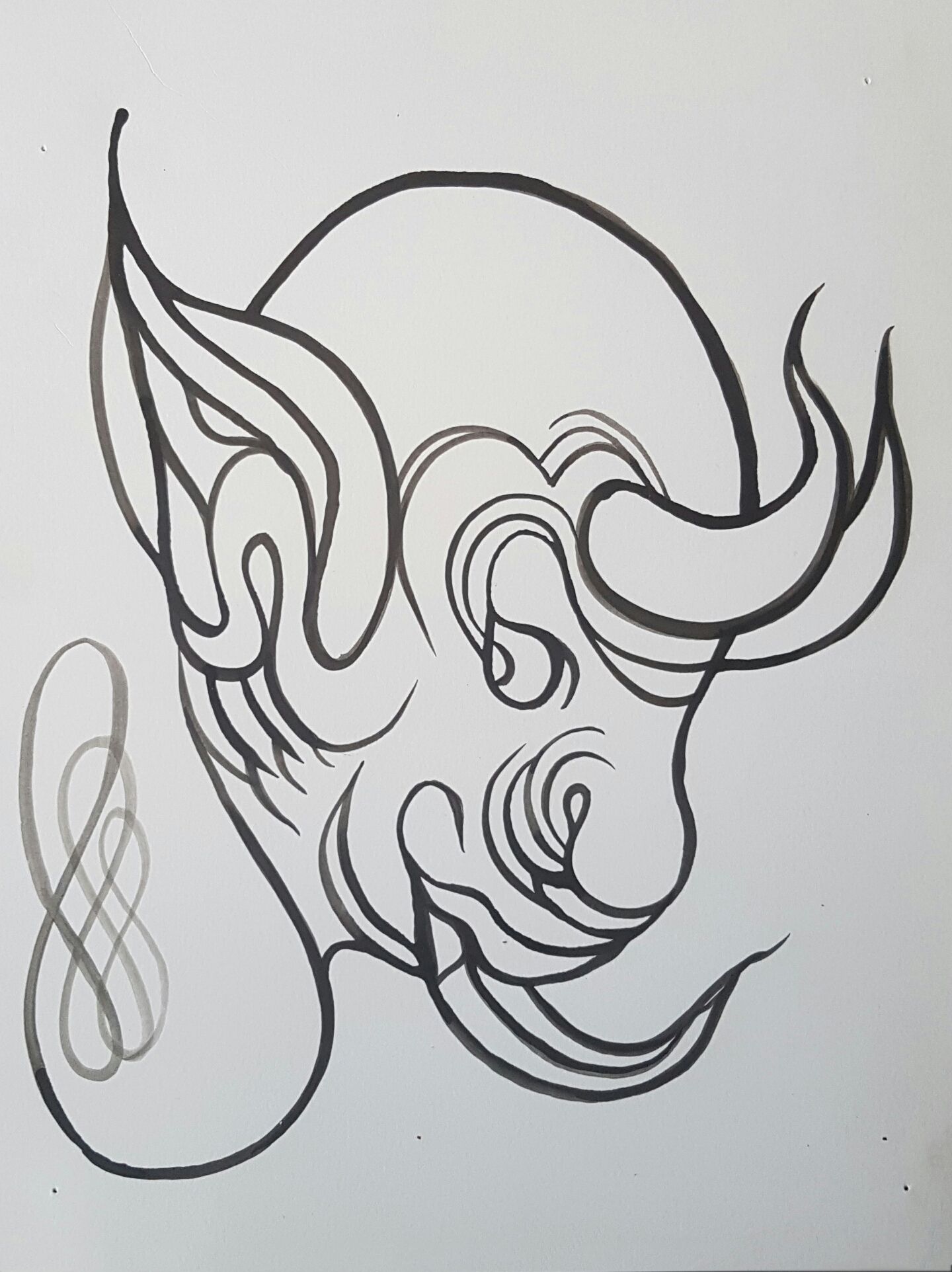
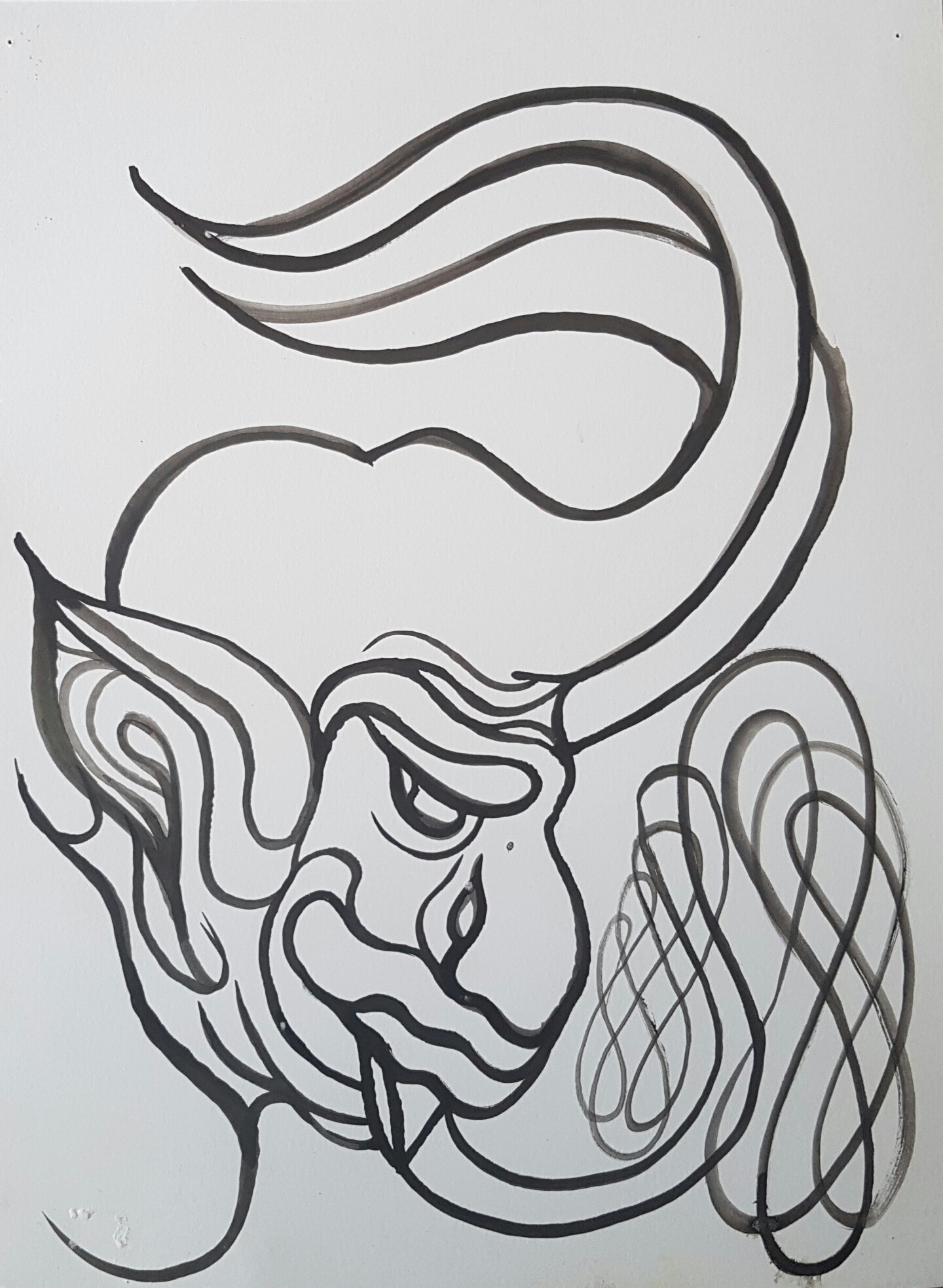
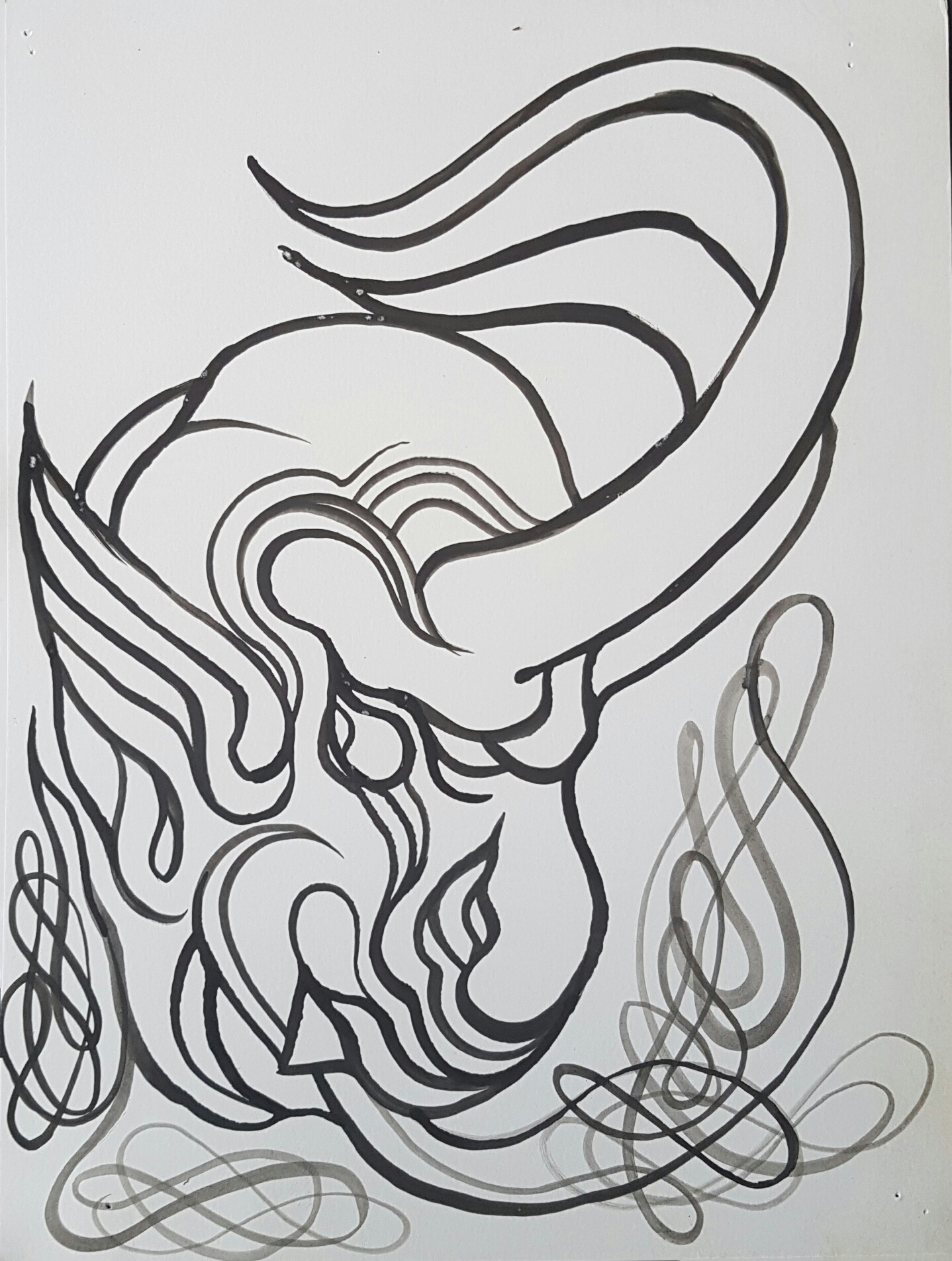
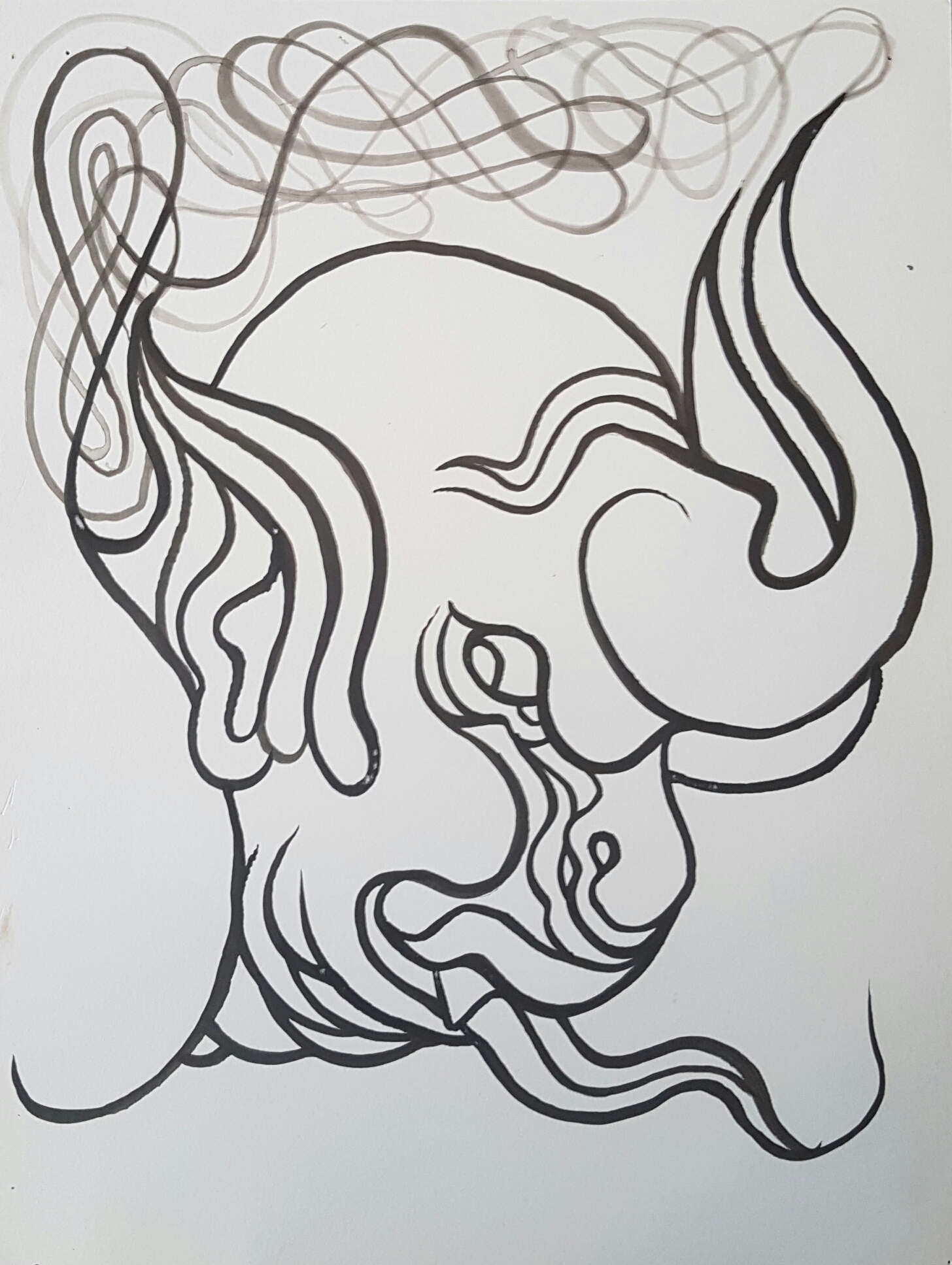
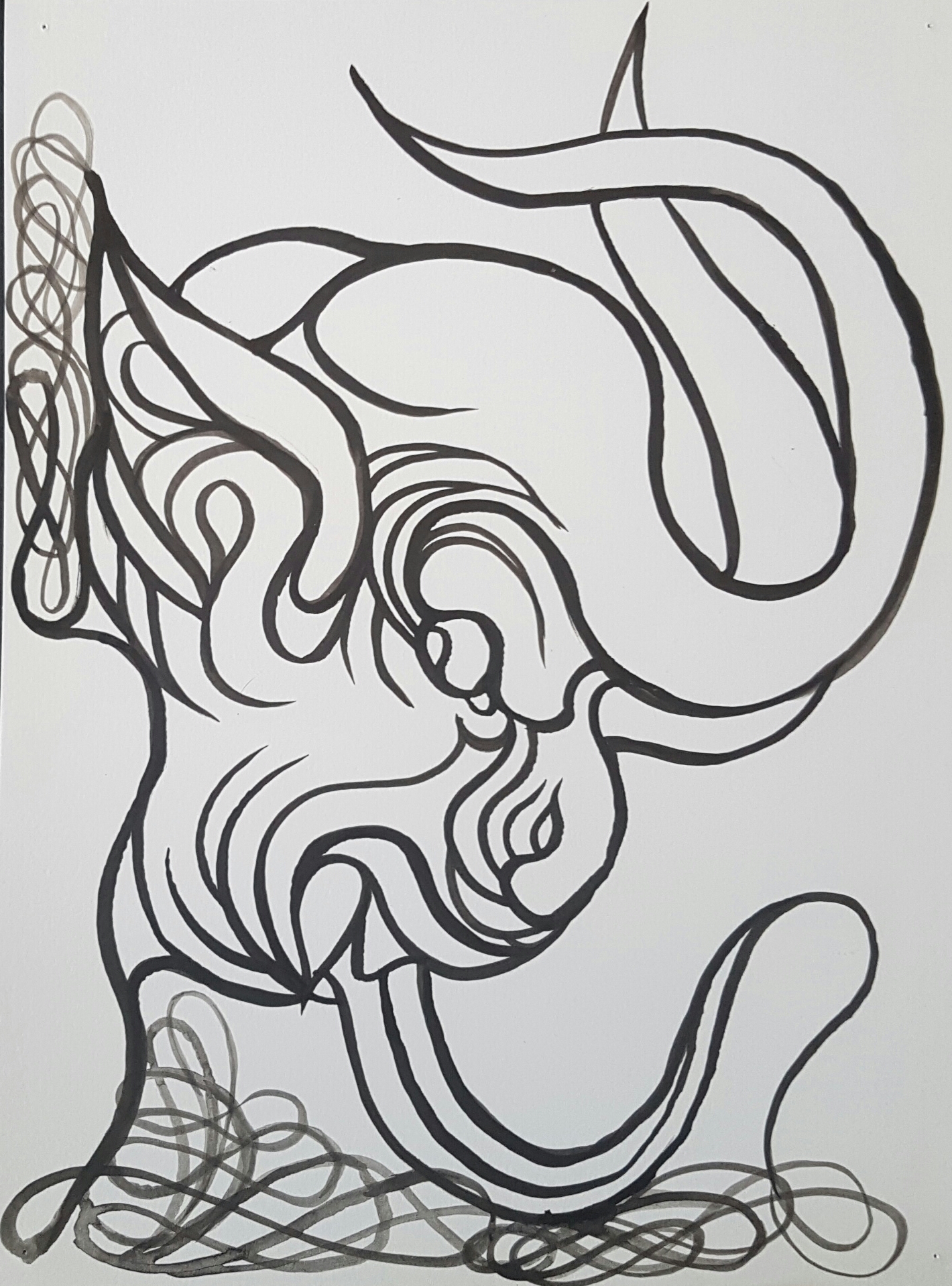
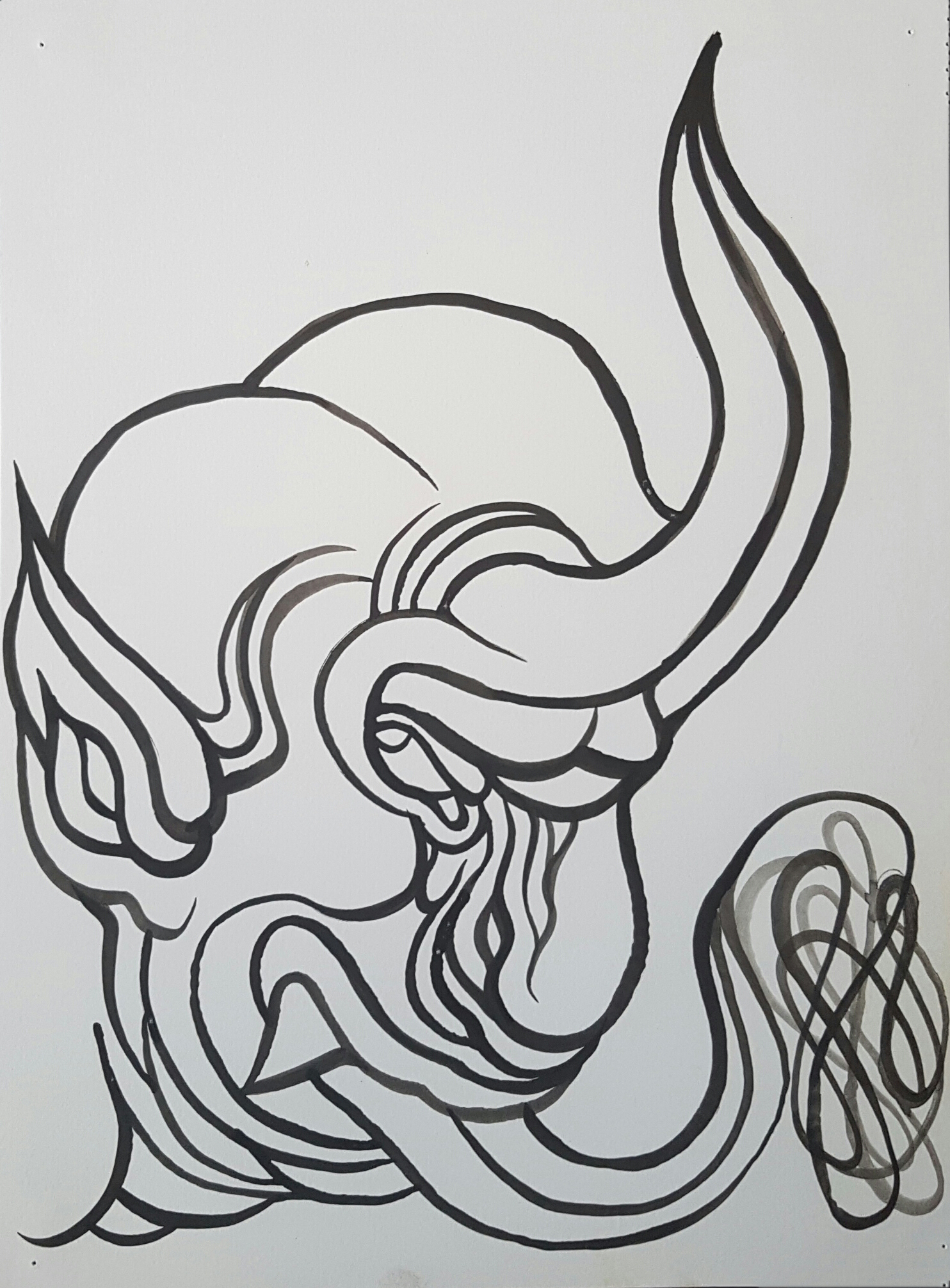
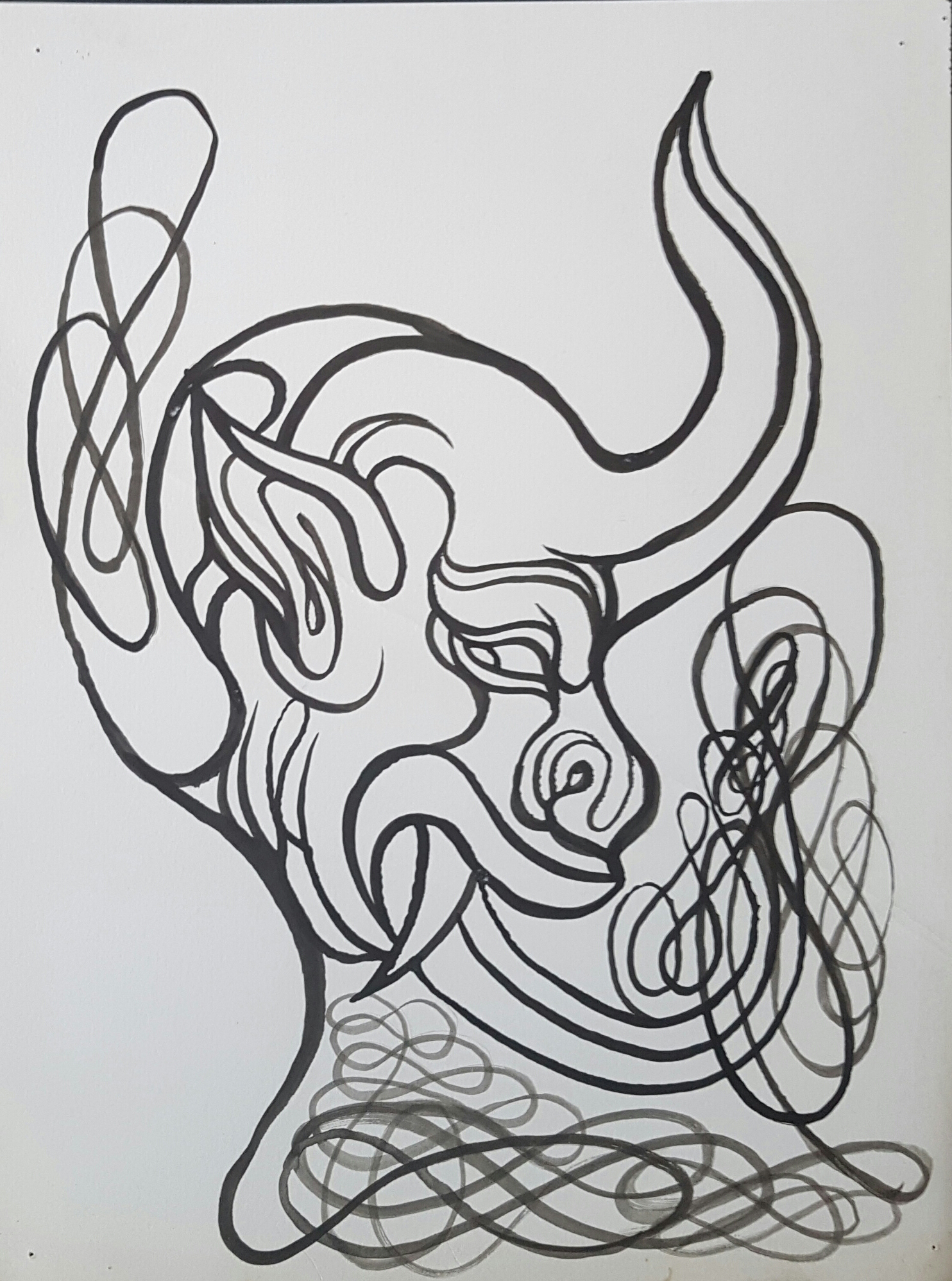
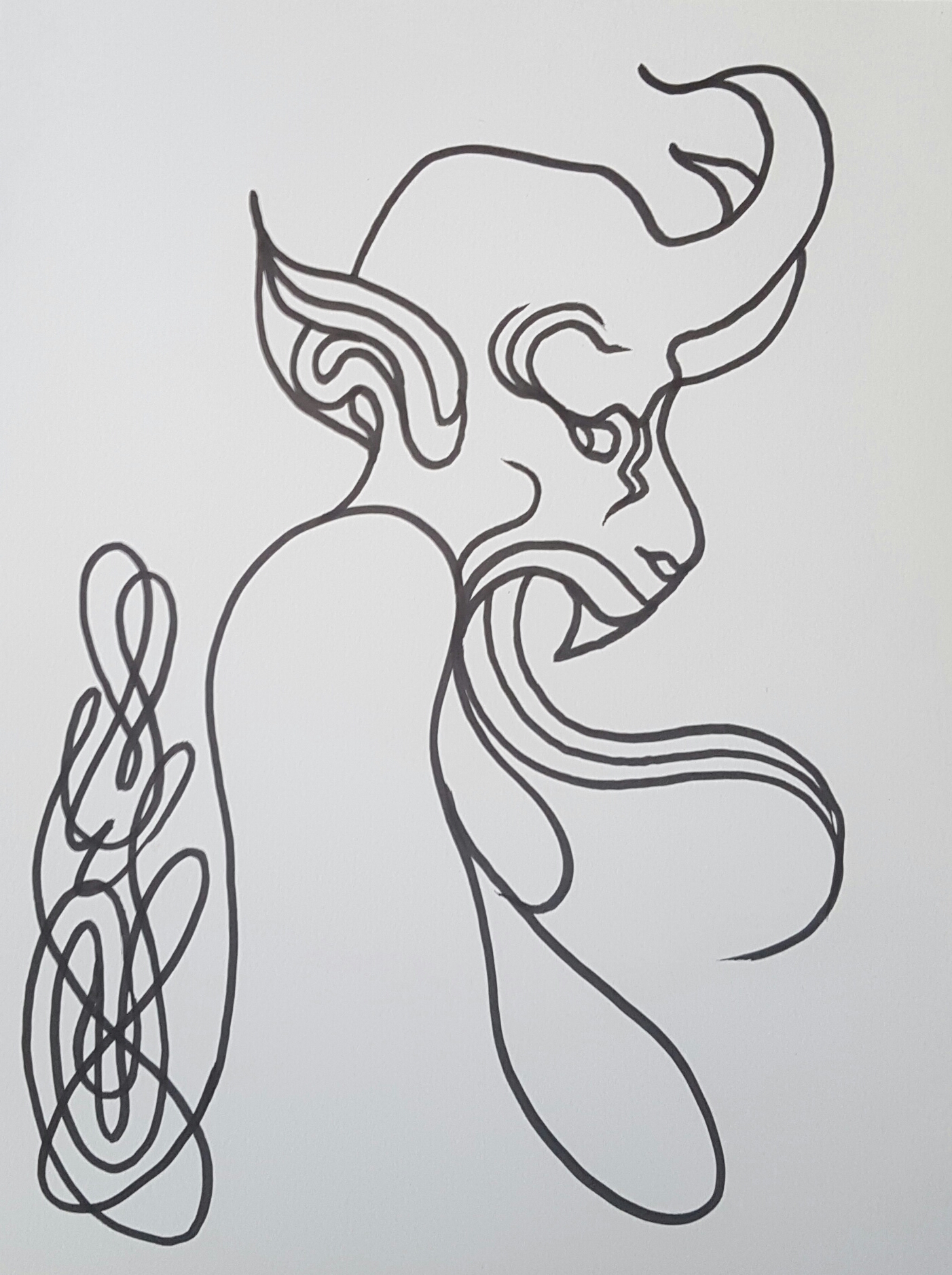
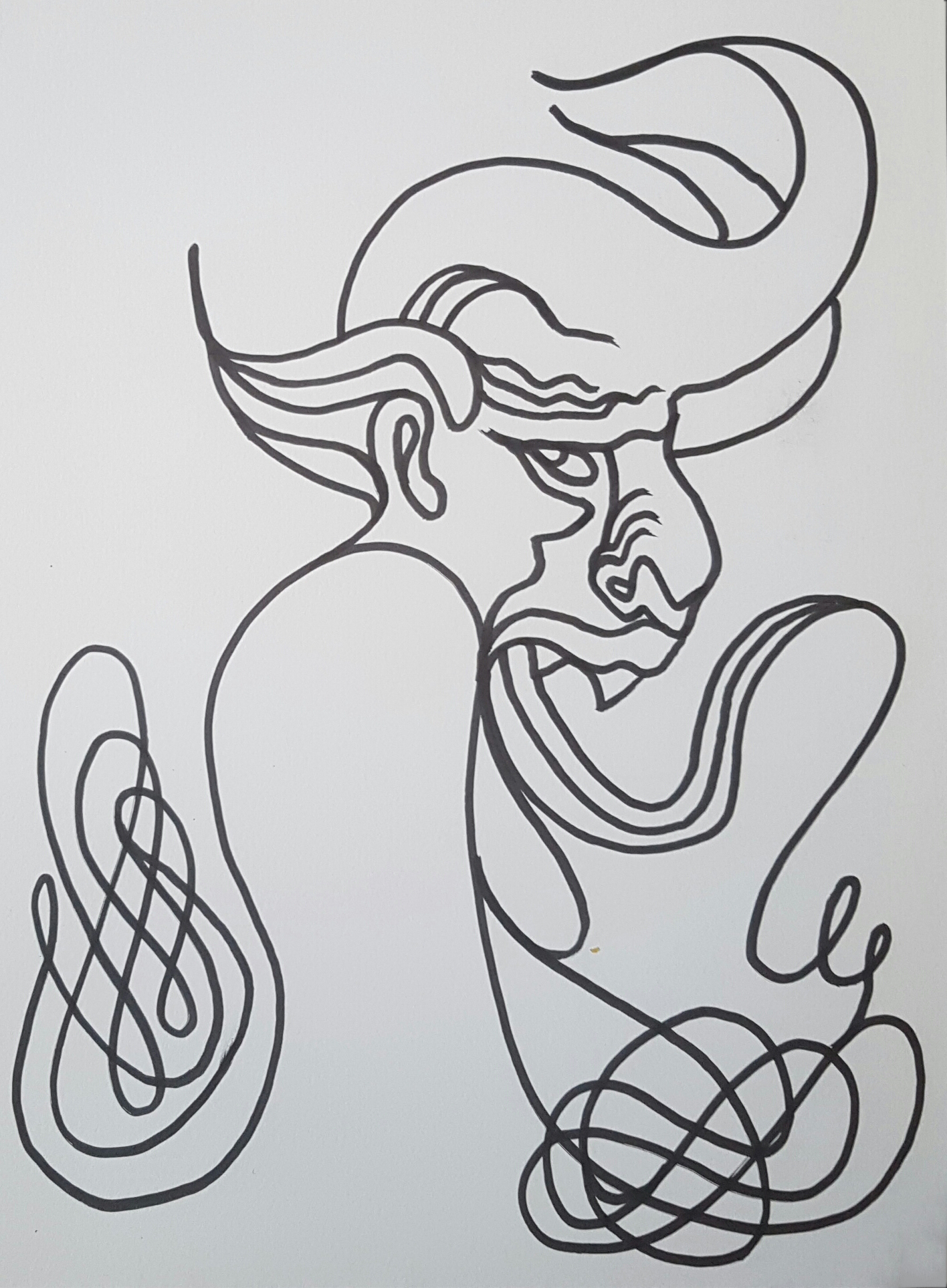
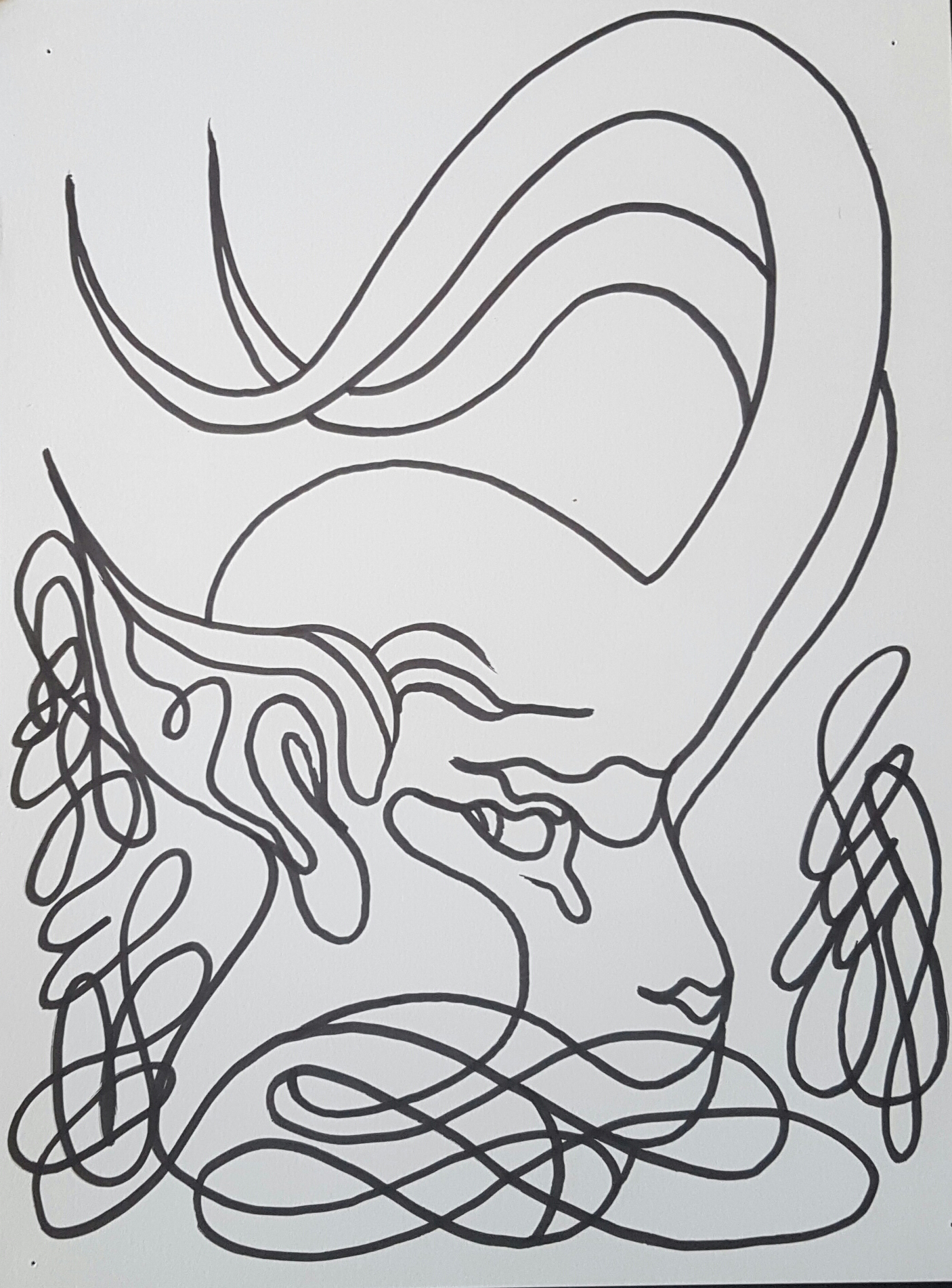
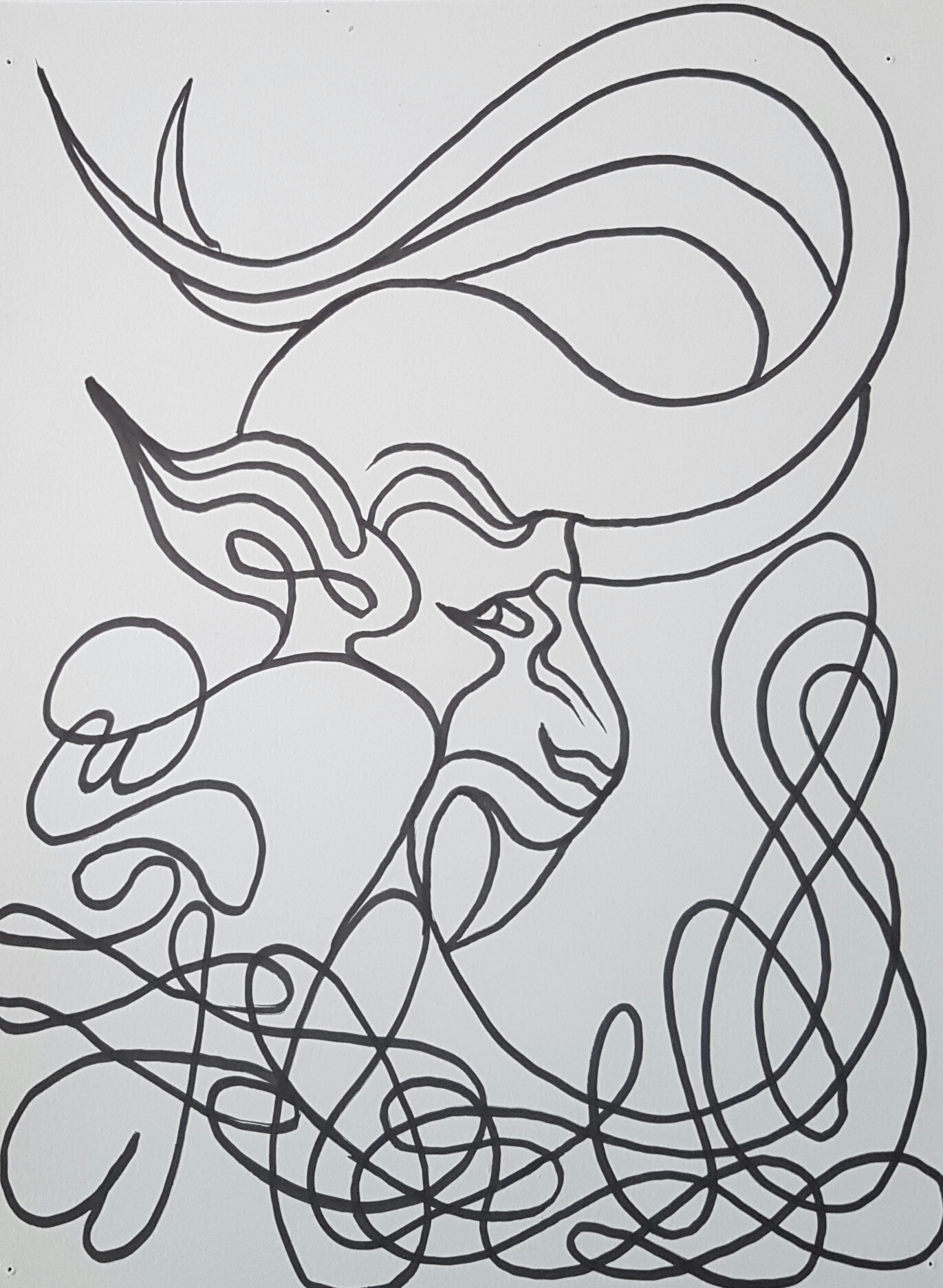
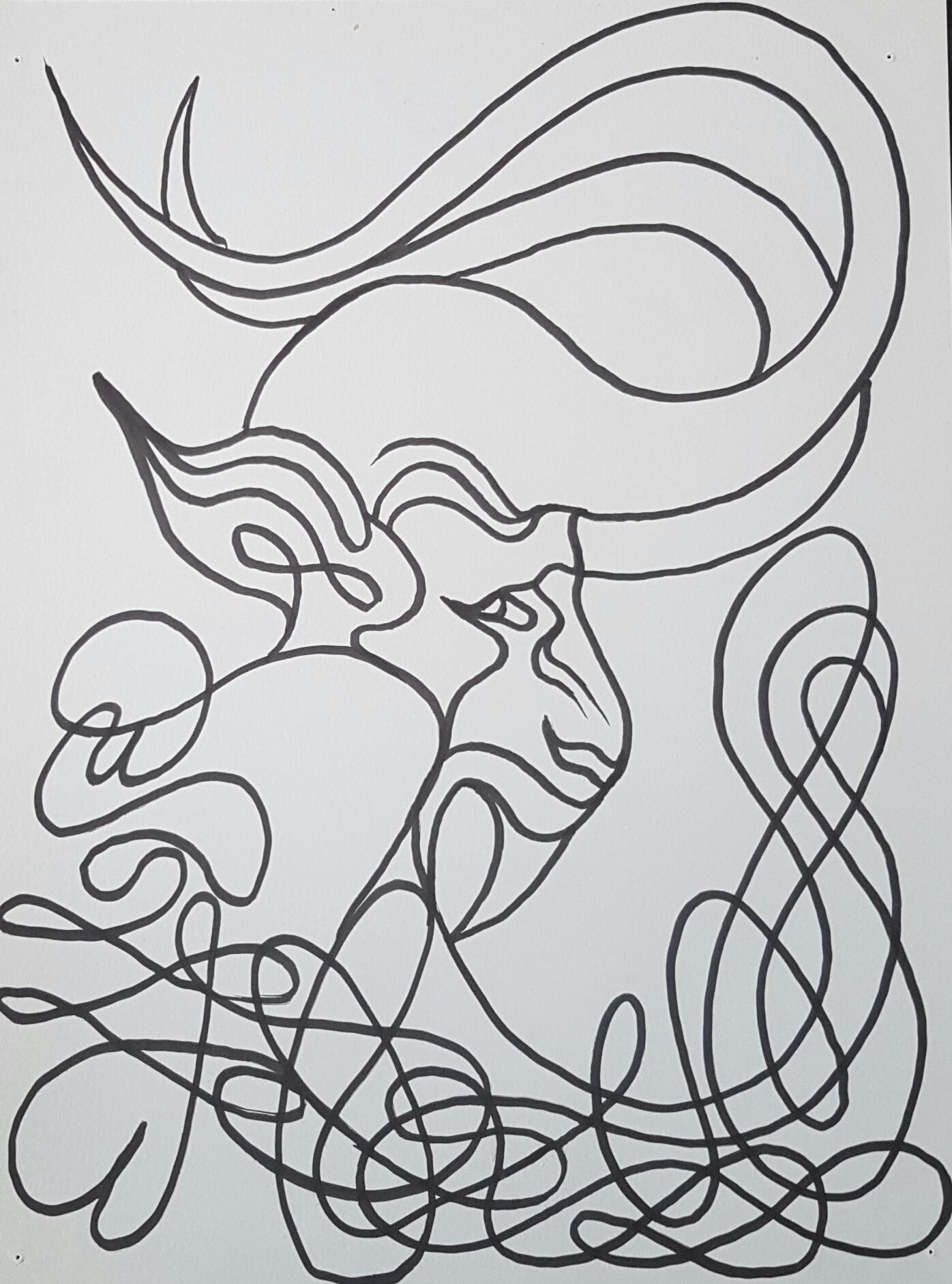

|